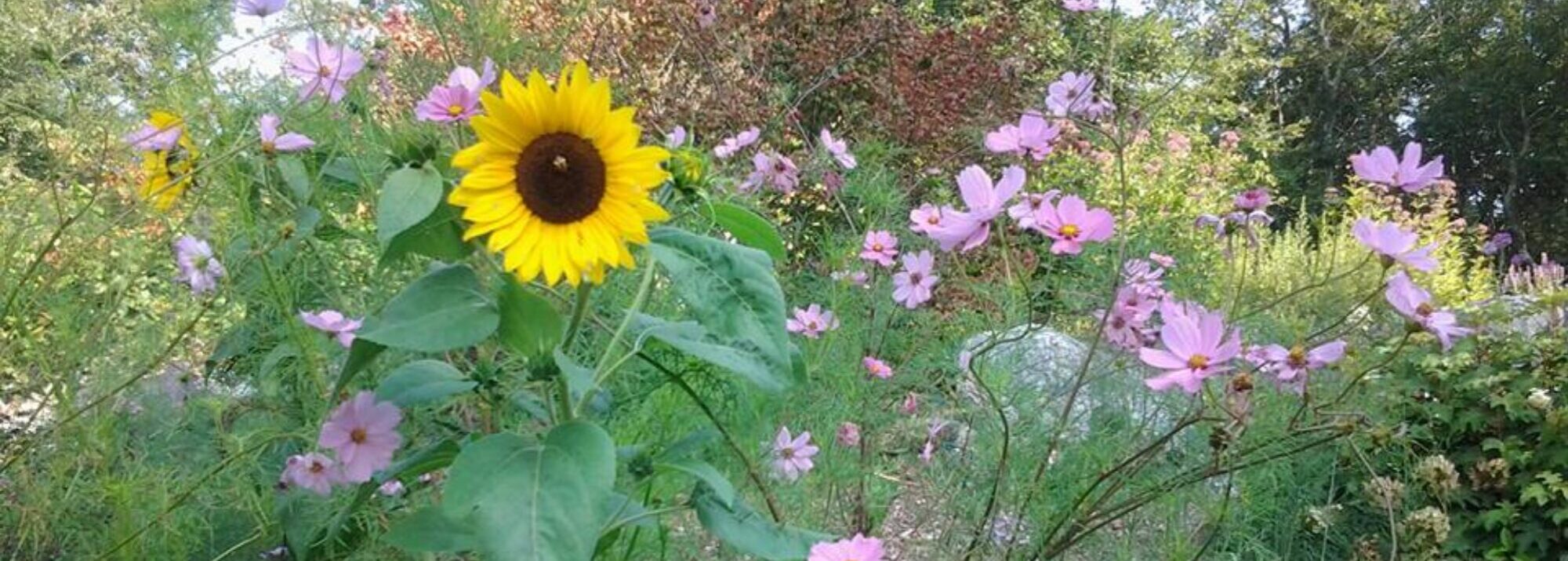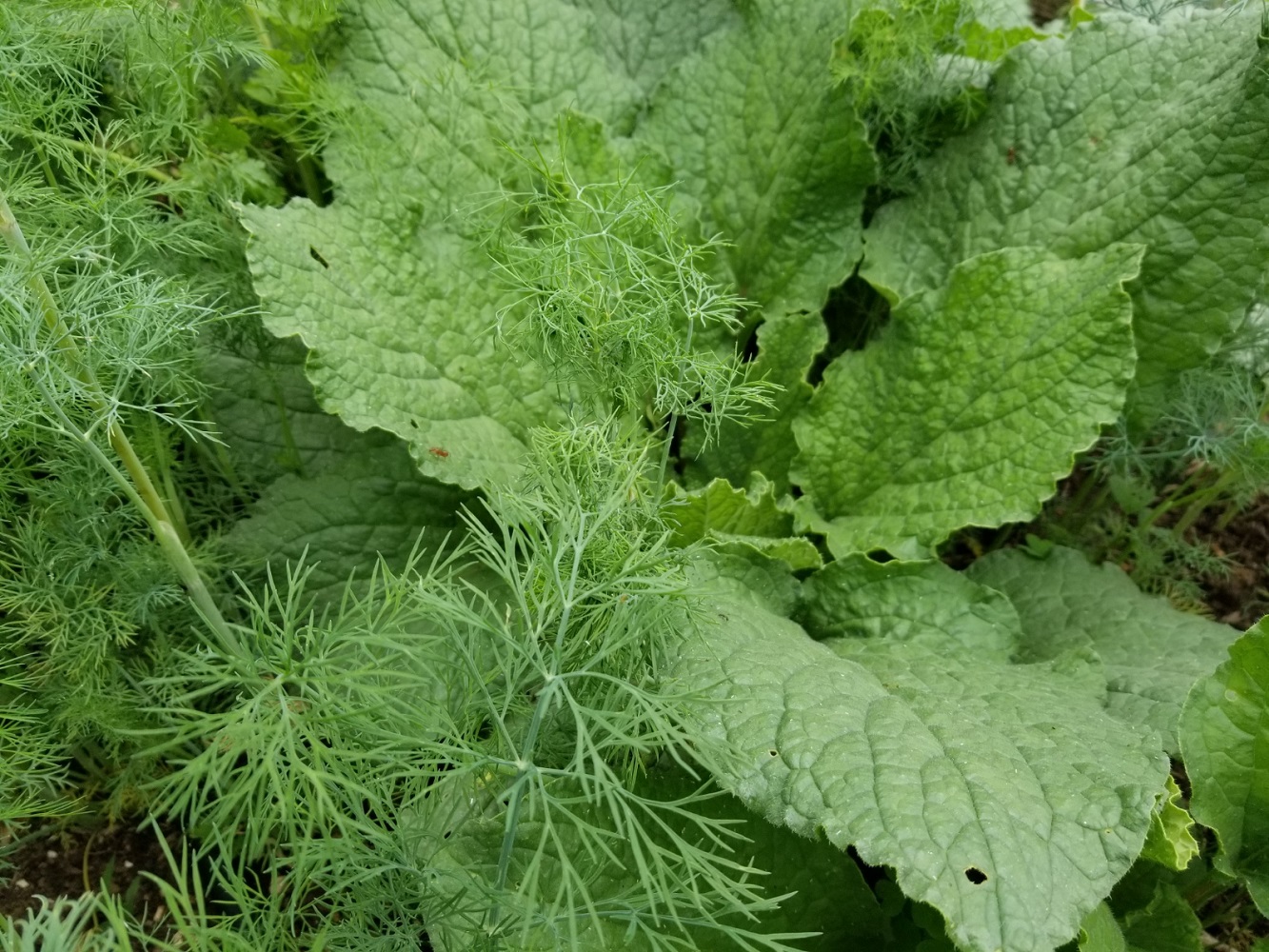
I began filling out this page throughout the 2023 growing season. Over time I’ll continue adding notes on my experiences and the garden lore I’ve gathered over the years. Melinmac cooks AND gardens! I appreciate all of the people who have shared their gardening secrets and successes, and I’m happy to pass along what has and hasn’t worked for me. I’m in Hardiness Zone 5b, northeastern Connecticut.
ARTICHOKES
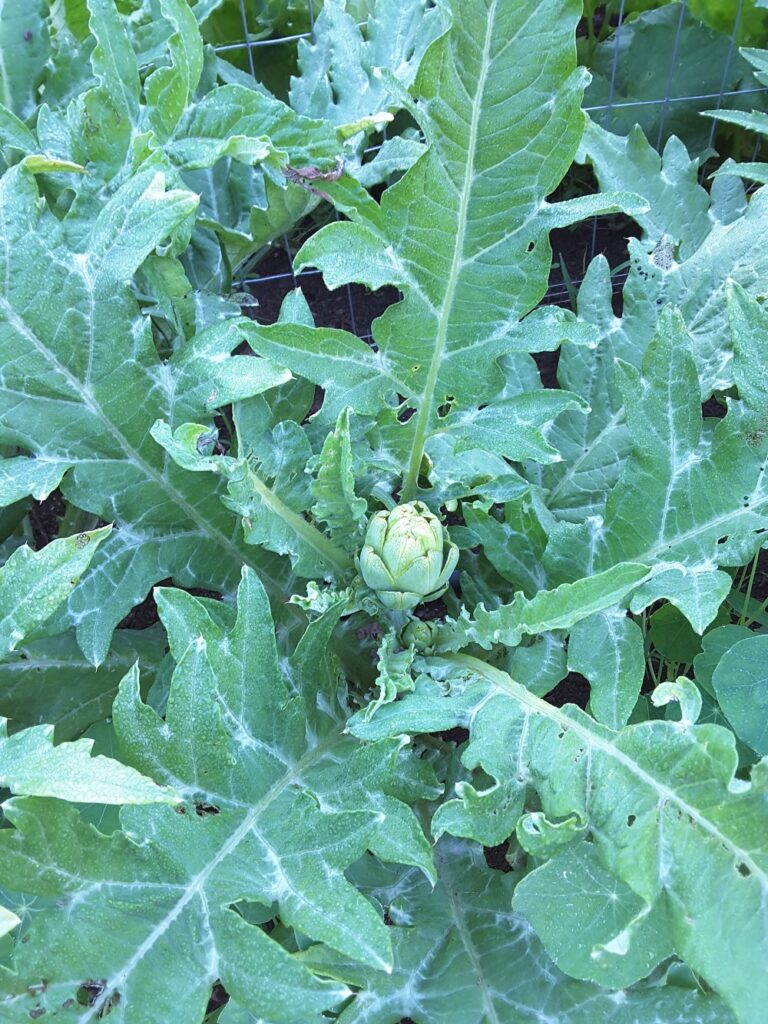
I tried growing artichokes once a few years ago. I knew it would be challenging because artichokes aren’t hardy enough to overwinter here, making it a long-season crop in my short-season growing zone. I told myself I’d be happy if we just harvested one meal. We did, but they were small and unsatisfying. Very pretty though! Maybe with global warming I’ll try again…
ARUGULA
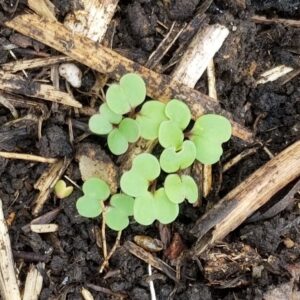
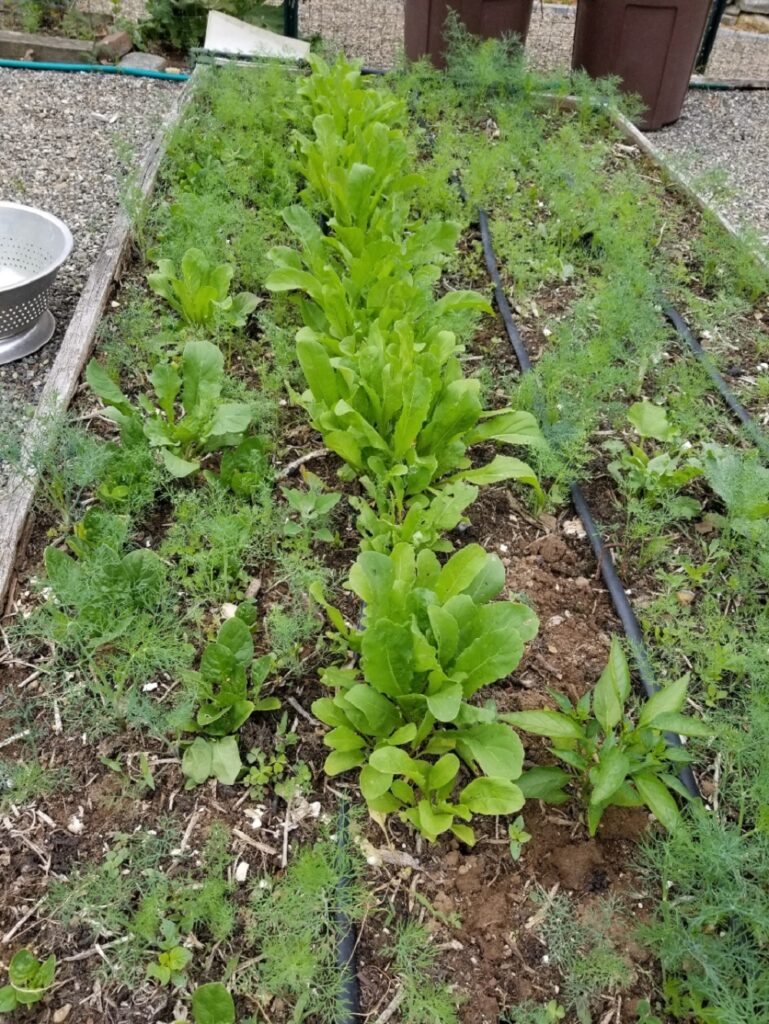
There really isn’t any trick to growing arugula. Just sow the seeds into rich soil early in the season, and the seeds do what seeds do – they germinate and the seedlings grow. Quickly! It only take thirty days or so from sowing to harvest. Arugula is also a cool-season crop, so it doesn’t last long once the days start to heat up. We love shrimp salad on a bed of arugula, a crisp arugula, radish, cucumber salad with lemon vinaigrette, arugula and spinach pakoras… Get it while you can.
ASPARAGUS
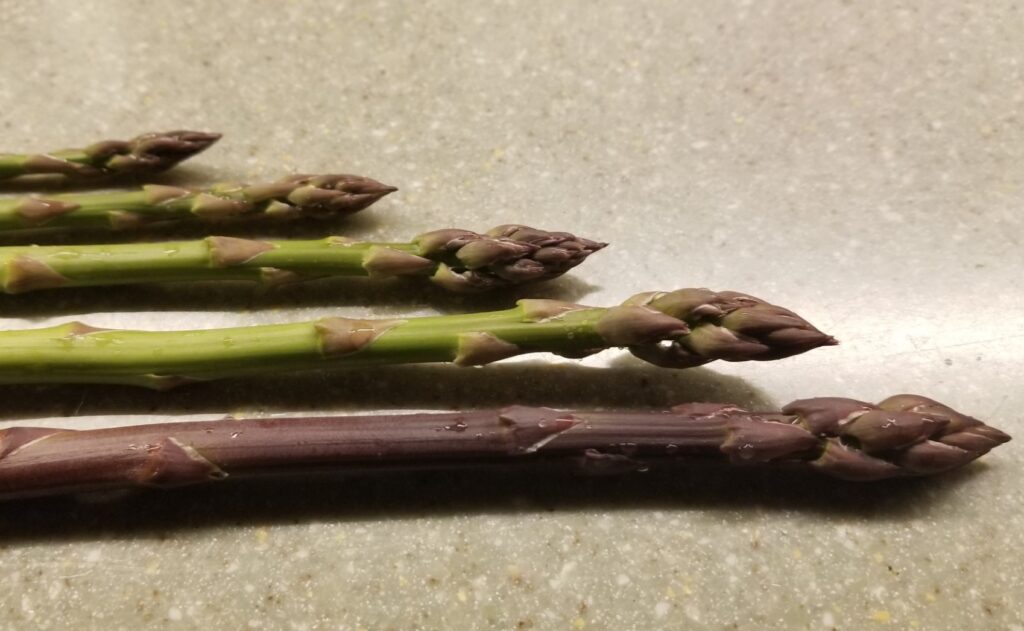
Asparagus is one of the delicacies of our garden. Typically the first spears emerges the weekend before the Boston Marathon each year. This year they emerged a bit later, but the plants were still producing through mid-June. I do find it challenging to find new ways to prepare asparagus because I try not to repeat the same dish twice throughout the season. But they’re always delicious simply steamed and served with butter and salt.
BEANS
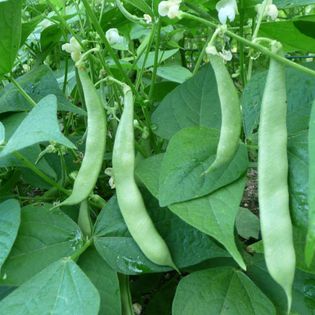
ROMANO BEANS
These beans are hearty and satisfying. They’re best stewed into submission.
RECIPE LINK:
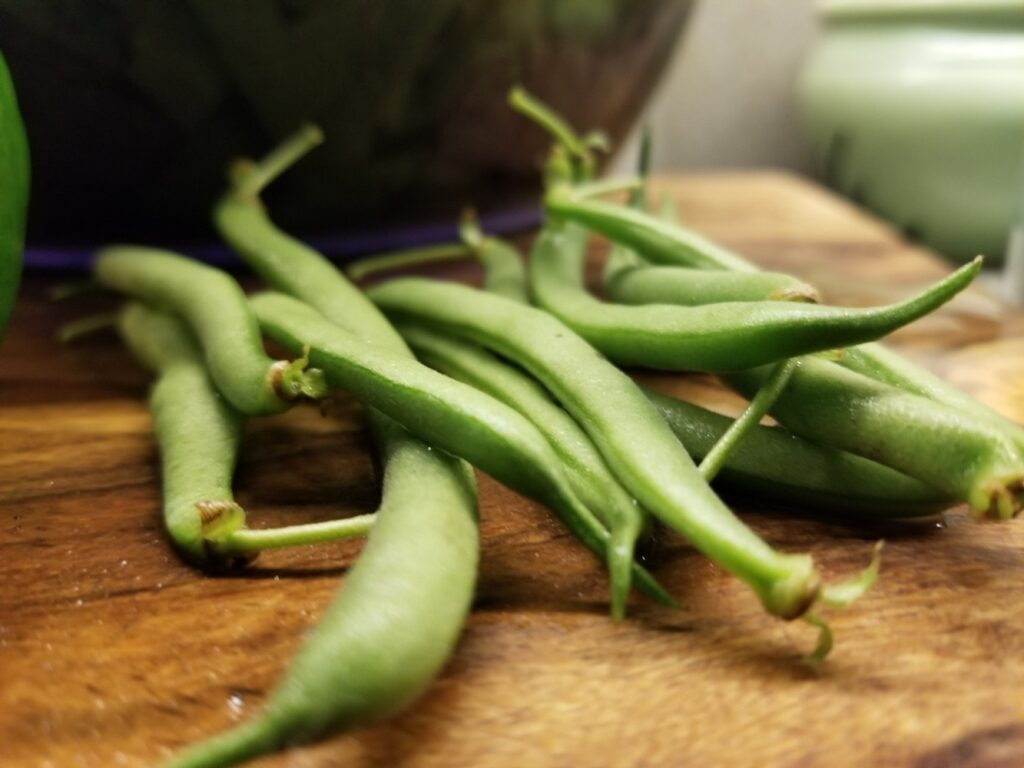
STRING BEANS
Typically I plant filet beans because they’re so versatile – delicate enough for salads and stir-fry. But this year I bought most of my seeds locally rather than mail order, so I didn’t have as much of a selection. These are generic string beans – I don’t remember the variety. A creature dug up my first planting, so I had to resow, but I guess he had his fun, and he left the second planting alone. I don’t mind sharing, but…
18sep23 – This was the final harvest of beans. I’m going to let the remaining beans dry on the plants so that I can replant the same variety next year. As soon as I have enough bean “seeds” I’ll pull the plants and cover the bed with a thick layer of compost, because this is where I’ll be planting the garlic for next year. The beans have been fixing nitrogen all season and the compost will feed the garlic as well.
RECIPE LINKS:
BEETS
Beets are a good companion plant for most other vegetables, and they germinate eagerly. I pop beet seeds into the garden beds wherever a spot opens up. I rarely have enough at one time to need to preserve them, but when I do, I like to can them with warming spices. I have a few recipes that I try to make from the fresh beets and beet greens throughout the summer. Otherwise, I simply steam the beets or roast them, and either tuck them into a salad or eat them plain with salt. So good, and good for you too.
RECIPE LINKS:
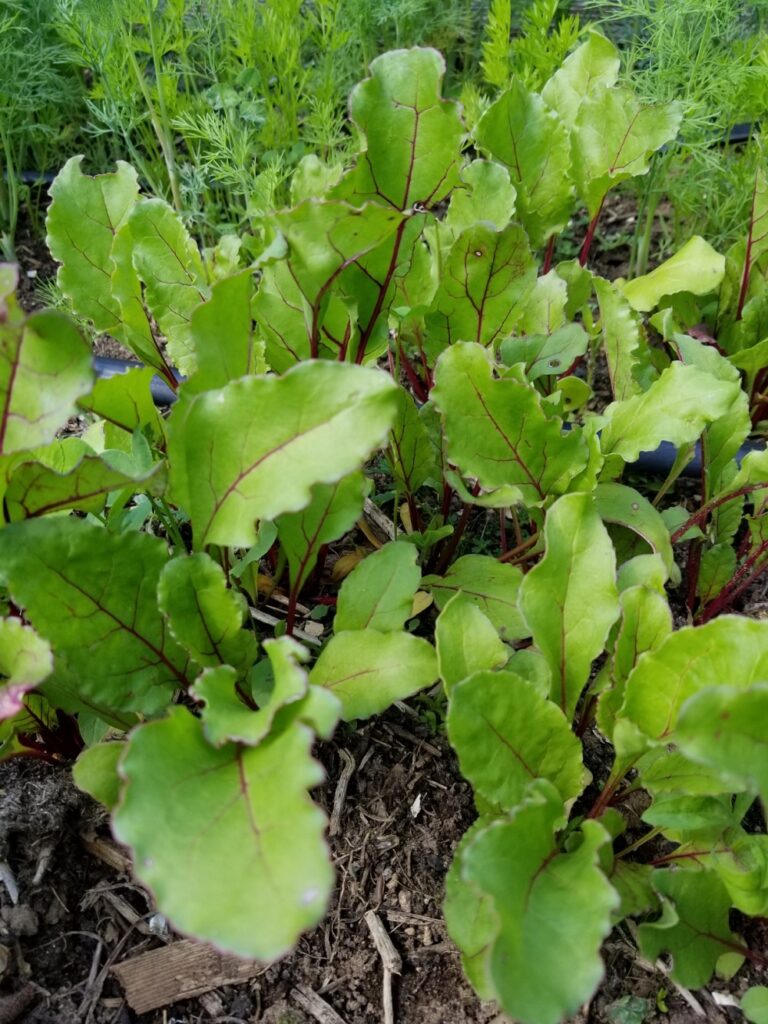

DETROIT DARK RED
I’m growing Detroit Dark Red this year. They are delicious and beautiful. But their greens can get ratty looking, and the jewel tones of the beet root will stain. I prefer growing golden beets, but I didn’t find seeds for them this year. Golden beets are a bit sweeter than the red beets, and both the greens and the root are tidier than the red beets.

CHIOGGA
Chiogga are such fun and festive beets. However, they haven’t been as prolific as Detroit Dark Red or Golden beets, for me, so I don’t grow these any more.
BOK CHOI
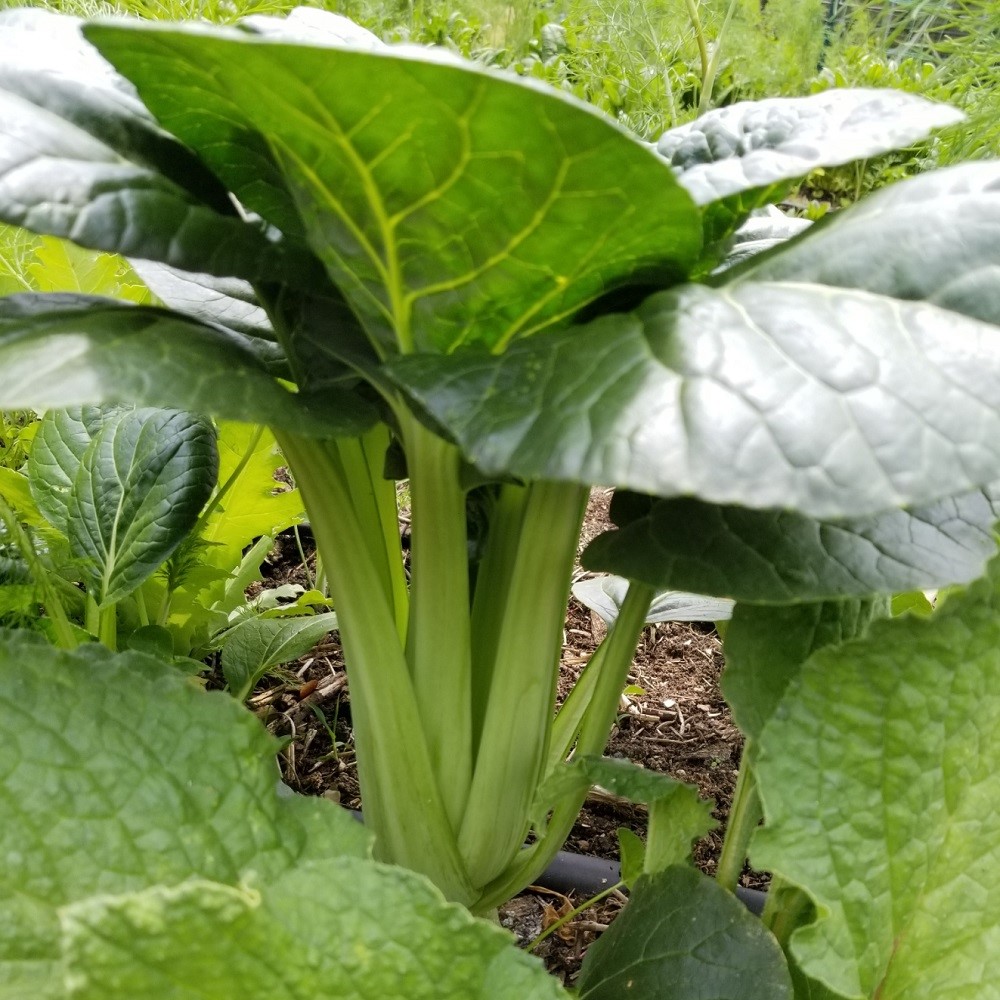
I don’t believe there’s a difference between bok choy and pak choi, but I do know that whatever you call it, it’s very easy to grow if you plant it mid-spring. I’ve read that it’s also a good late season crop, but I haven’t tried that. Maybe this year I will. We love it in stir-fry meals and Asian flavored soups.
CABBAGE

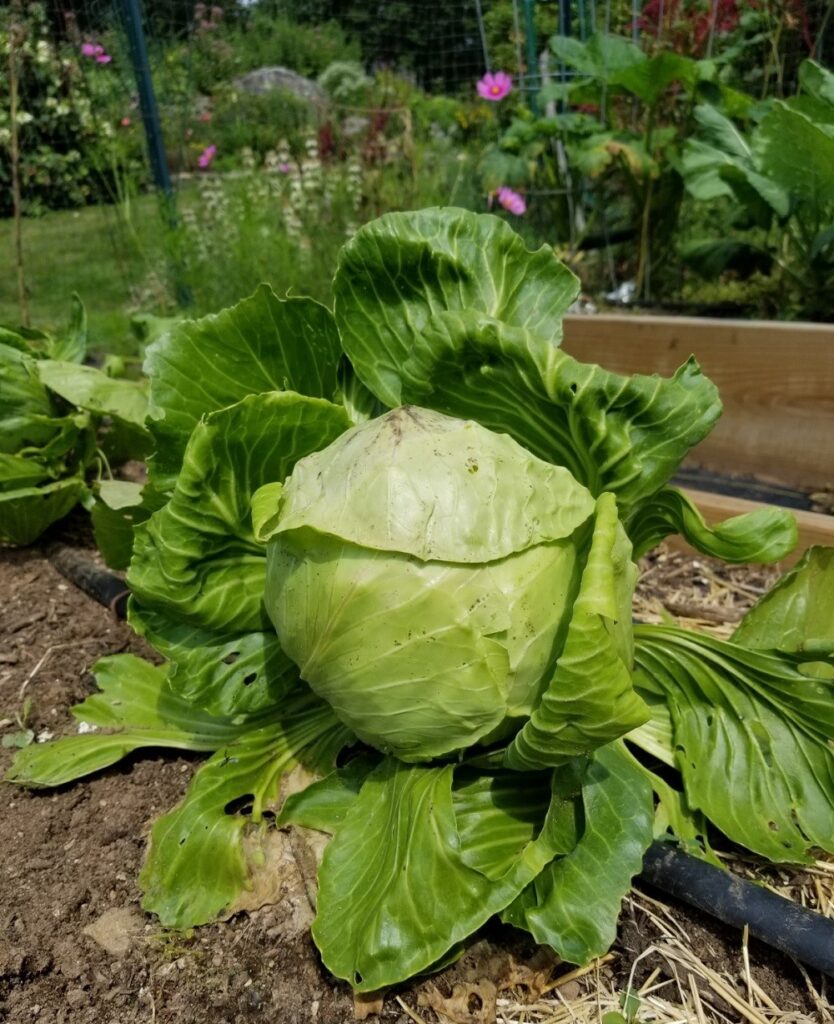
COPENHAGEN
Cabbage is a beauty in the garden, unless/until the bugs get it. We don’t use any pesticides, so it’s us against them. We make the garden as hospitable to birds and beneficial insects as possible, which helps a great deal, but it can still be a challenge. I have a hose that reaches most of the beds in the fenced in garden space, and I’m careful to plant the cabbage within reach. I try to inspect the heads every morning and blast out any intruders. Sometimes it works; sometimes it doesn’t. But it’s so worth it when it does!
RECIPE LINK:
CARROTS
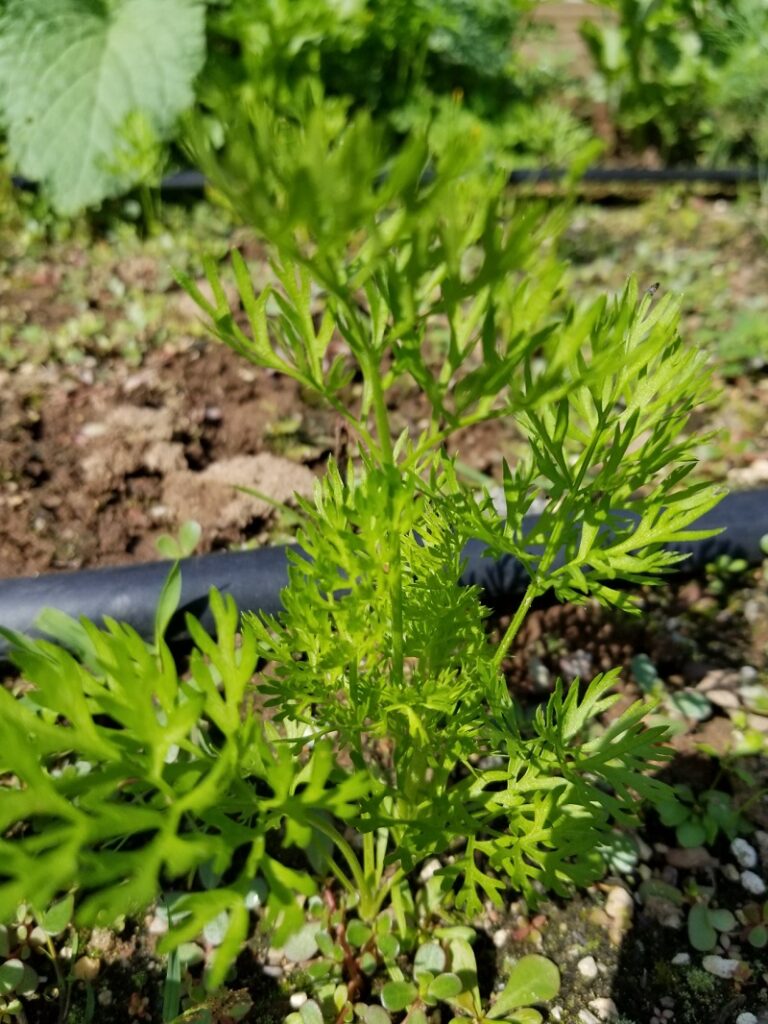
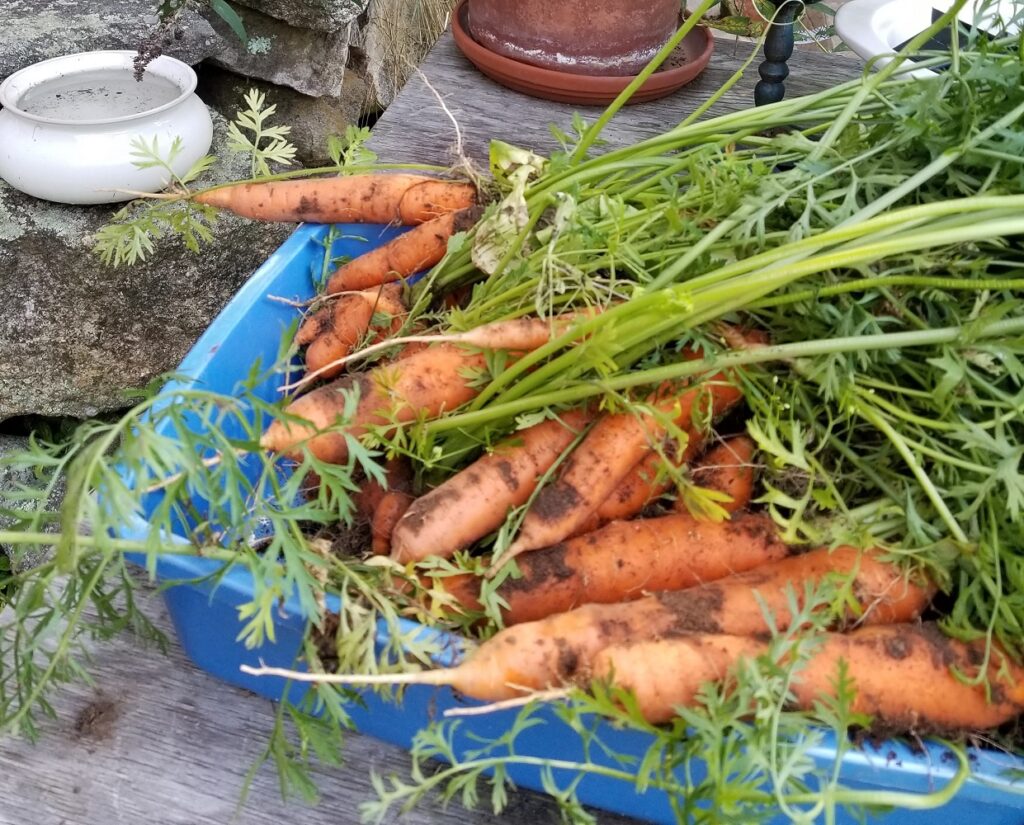
CORELESS NANTES
Carrots are very easy to grow as long as you’re OK with waiting, and waiting. They take a long time to germinate. I’ve felt compelled to reseed in the past, but regretted it when both sowings eventually germinated and I was forced to thin out the seedlings – a dreaded task. Which little baby who took so long to emerge do I pluck out? It’s stressful.
I grow Nantes carrots because they’re fat and stubby which works well in raised beds. Nantes is also wonderfully sweet with a crunchy texture.
CELERY
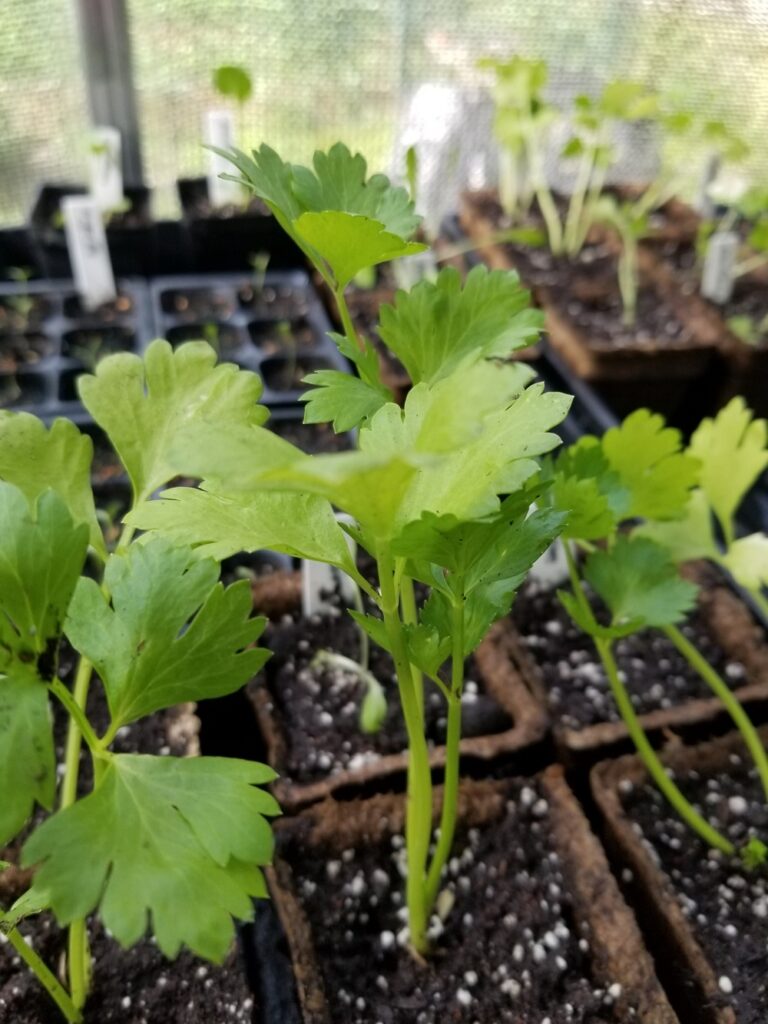
TANGO
Tango is the only type of celery I grow. It’s slow to germinate, but once it’s out of the ground, it’s tough as nails. I sow it in six-packs, three or four seeds per cell, and typically they all germinate. If you gently prize them apart to transplant them to cowpots or directly into the ground, they don’t complain at the root disturbance. They also remain pretty friendly throughout the summer without getting tough or cranky as long as you water them regularly.
RECIPE LINK:
COLLARD GREENS
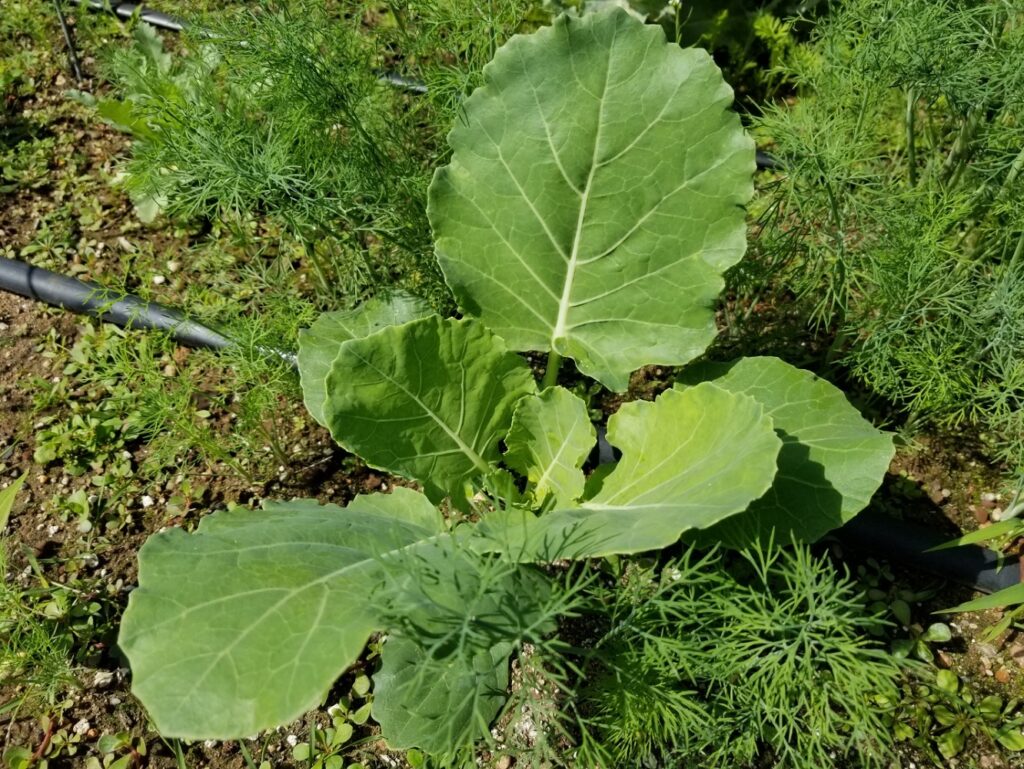
Collard Greens – another surprise. They’re incredible in stews, pakoras, pesto. They freeze well too. I blanch them, shock them, and roll them into cigars once they dry. Then stack them in a Ziplock bag in the freezer You can pull one or more “cigars” out of the freezer whenever you feel inspired.
RECIPE LINK:
CORN

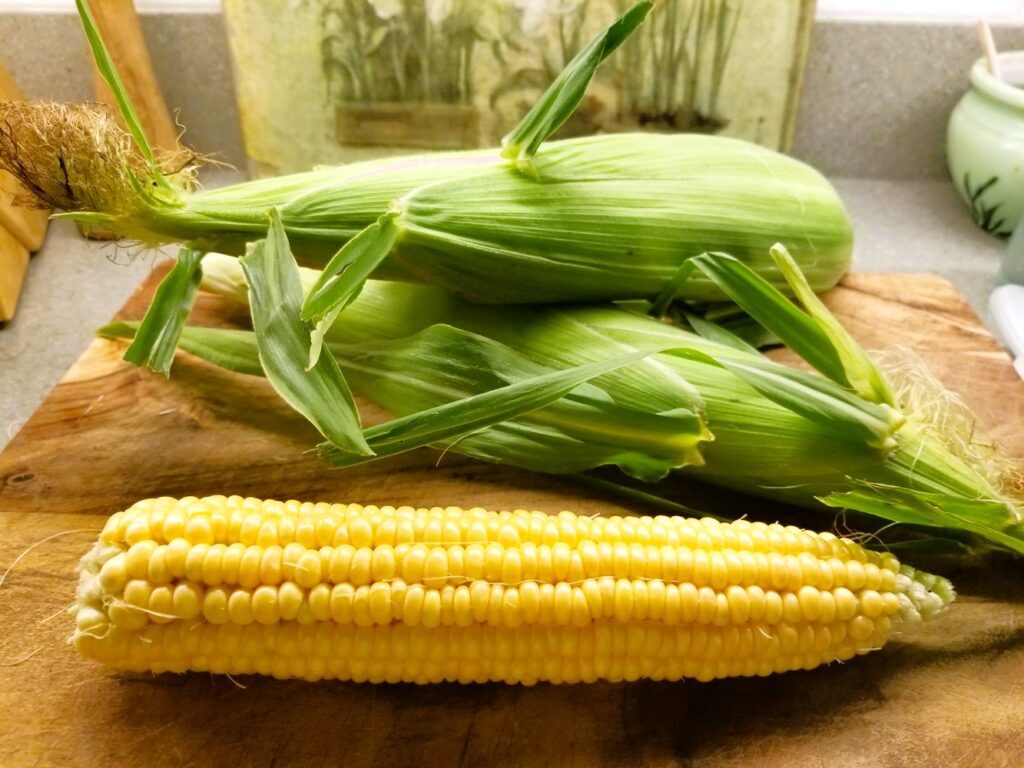
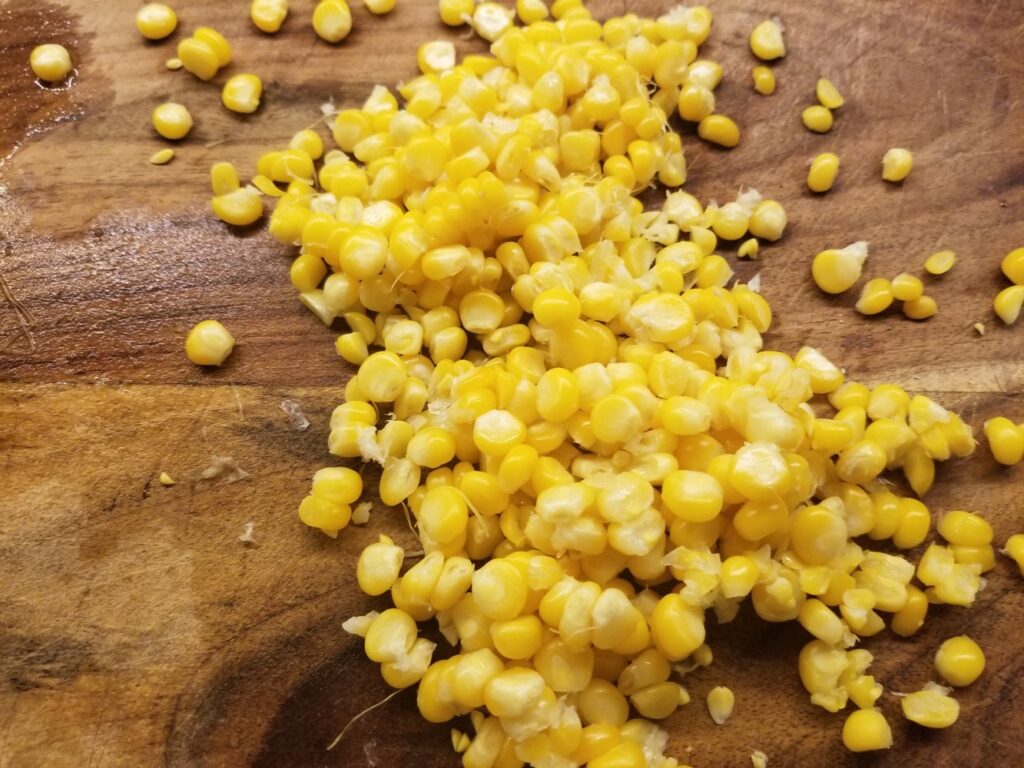
This will be our third season growing corn. We haven’t had a problem with racoons eating our ears, but we have had difficulty figuring out what variety of corn we like. That it must be organic and non-GMO should go without saying. The first year we grew a zigzag row of heirloom corn. I’m embarrassed to admit that I kept watching for the ear to form at the top of the stalk. When the tassels emerged and the ears started jutting out of the sides of the stalks, I was dismayed. How did I not know this?
The corn we grew that first year tasted like sawdust. Last year we had a bit more luck – check out my Southern Cornbread post for that story. This year we’ve planted Golden Bantam organic sweet corn from neseed (a non-GMO variety). Fingers crossed.
UPDATE (24aug23)
The corn is fantastic! Great pollination, great flavor, great texture. We’re not even going to try to preserve it – we’re going to eat it – breakfast, lunch, and dinner!
RECIPE LINKS:
CUCUMBERS

MARKETMORE
I’ve been growing Marketmore for many years, after many years of trying different varieties. All at once, different friends recommended Marketmore, and I’m glad they did. Marketmore is a large crunchy cucumber with small seeds. They grow pretty straight, which make packing them in to canning jars a cinch.
RECIPE LINKS:
EGGPLANT
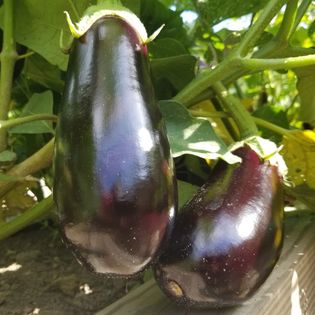
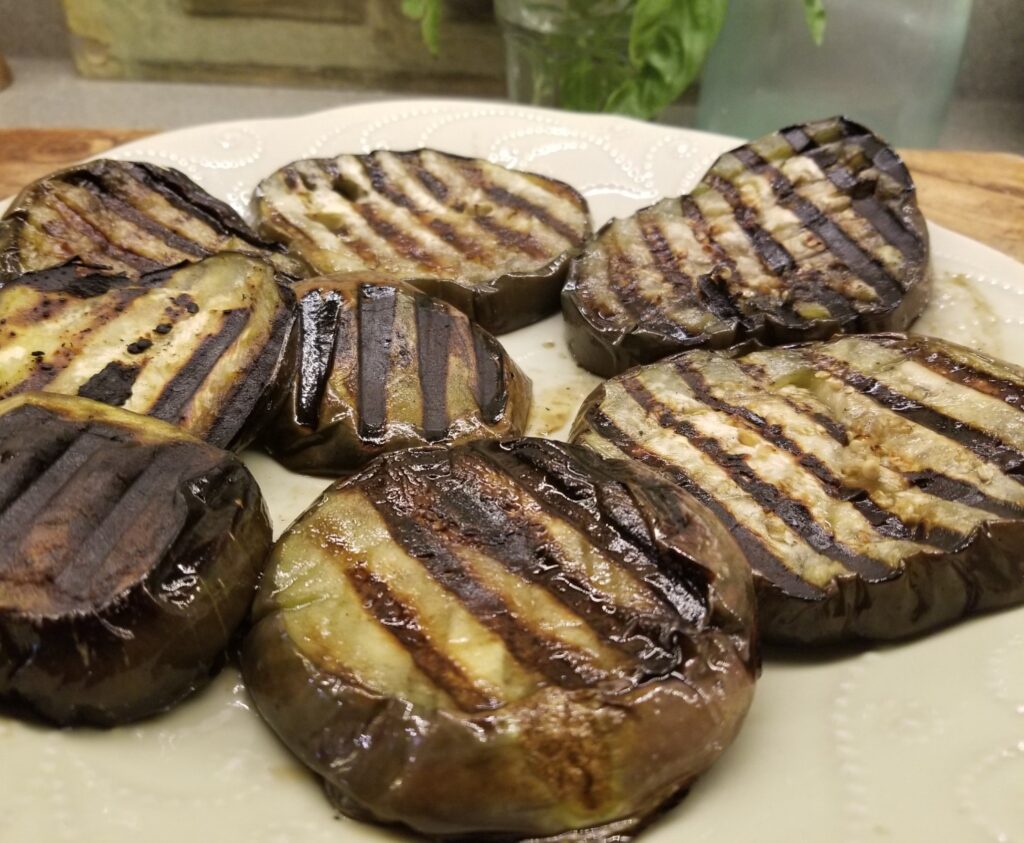
BLACK BEAUTY
We didn’t harvest as many globe eggplants this year as in prior years. I have no idea why, especially given that the Japanese eggplant are so prolific.
RECIPE LINK:
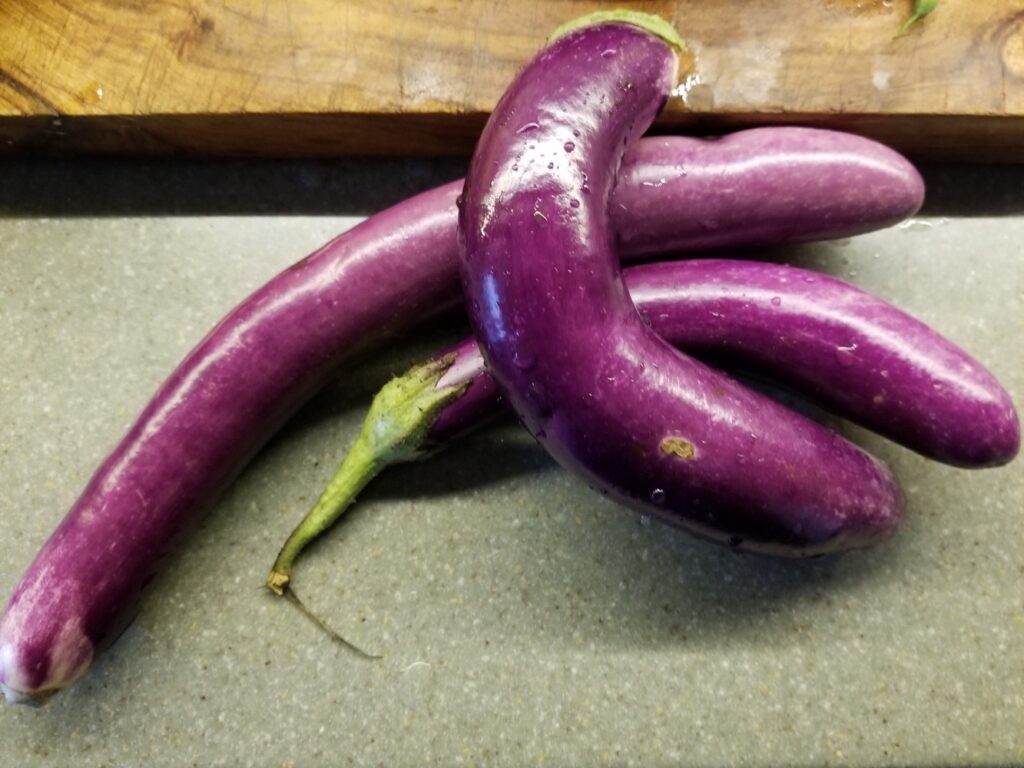

PINGTUNG LONG
2023 has been our best growing season for Pingtung Long yet. There are an amazing number of these beauties hanging on the plants. They just keep coming.
RECIPE LINKS:
FORAGING
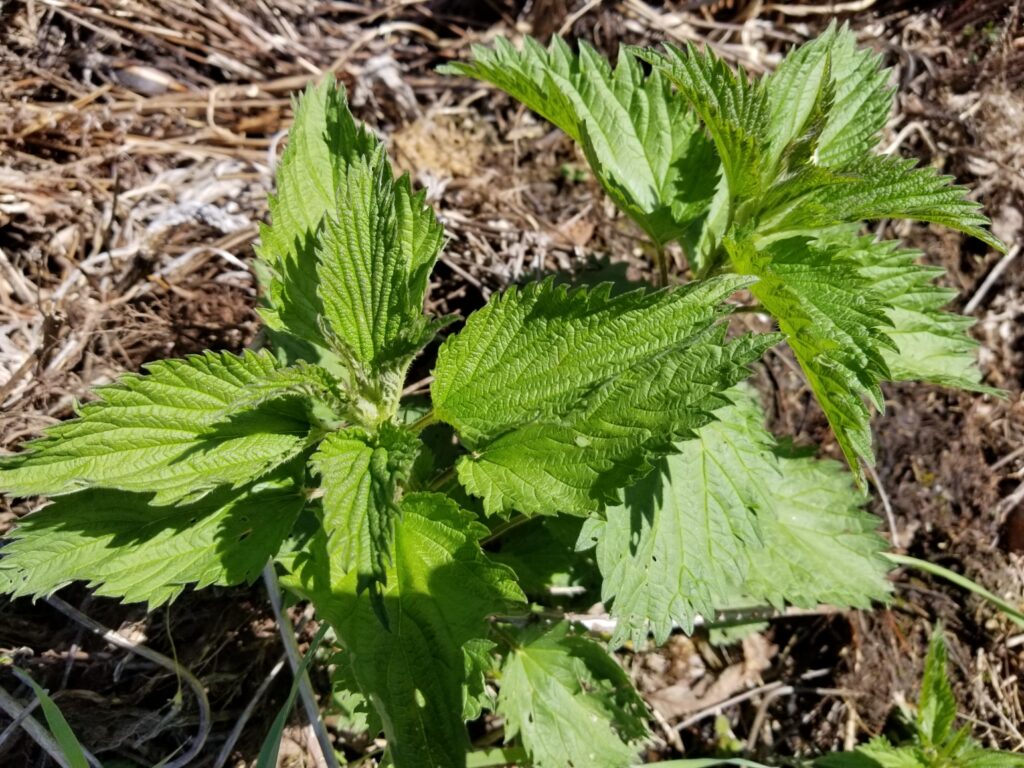
STINGING NETTLES
“Stinging nettle has antiproliferative, anti-inflammatory, antioxidant, analgesic, anti-infectious, hypotensive, and antiulcer characteristics, as well as the ability to prevent cardiovascular disease, in all parts of the plant (leaves, stems, roots, and seeds).”
– National Institutes of Health (.gov)
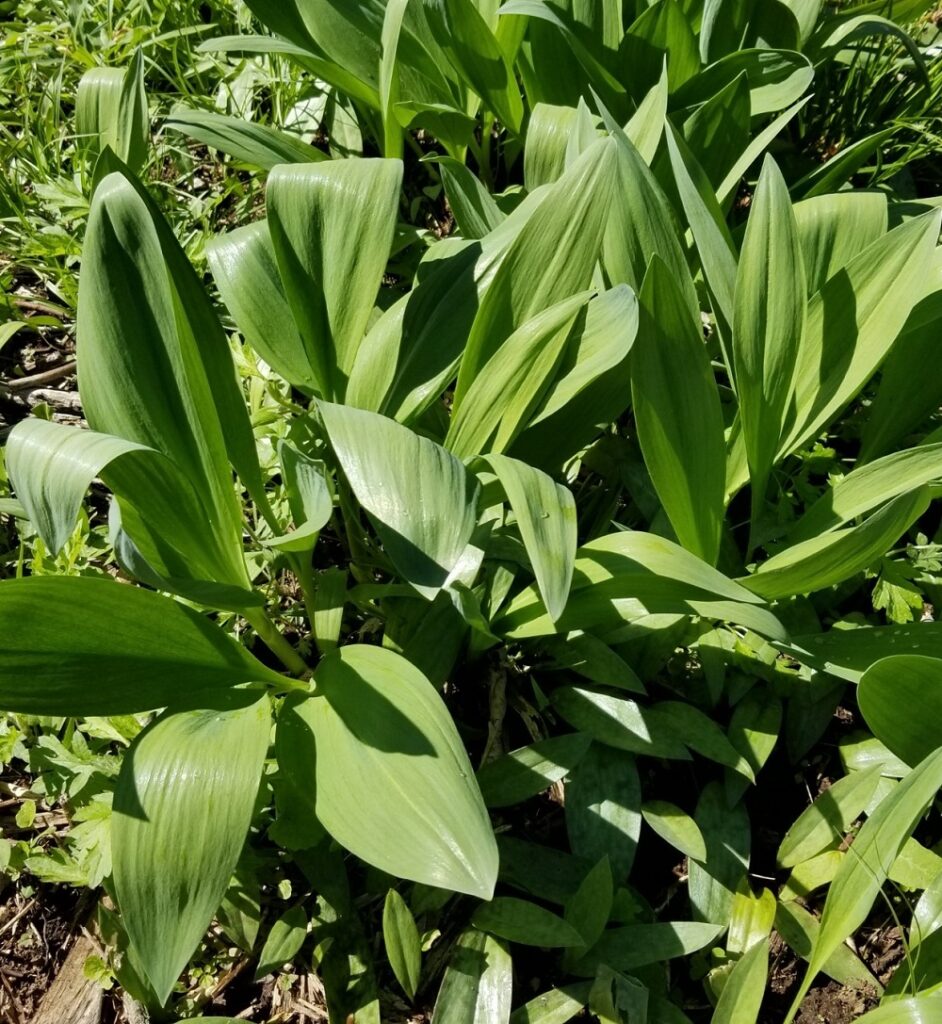
RAMPS
“Like all onions, ramps are rich in vitamins A and C, selenium, and chromium. That makes them good for teeth, bones, eyesight, the immune system, the cardiovascular system. They contain antioxidant properties that fight off harmful free radicals in the body.”
– Farmer’s Almanac
“The ramp (Allium tricoccum) is a traditional plant in the eastern Appalachian Mountains. Ramps have been used in traditional medicine for their health-promoting roles in lowering blood pressure and cholesterol.”
– National Institutes of Health (.gov)
GARLIC
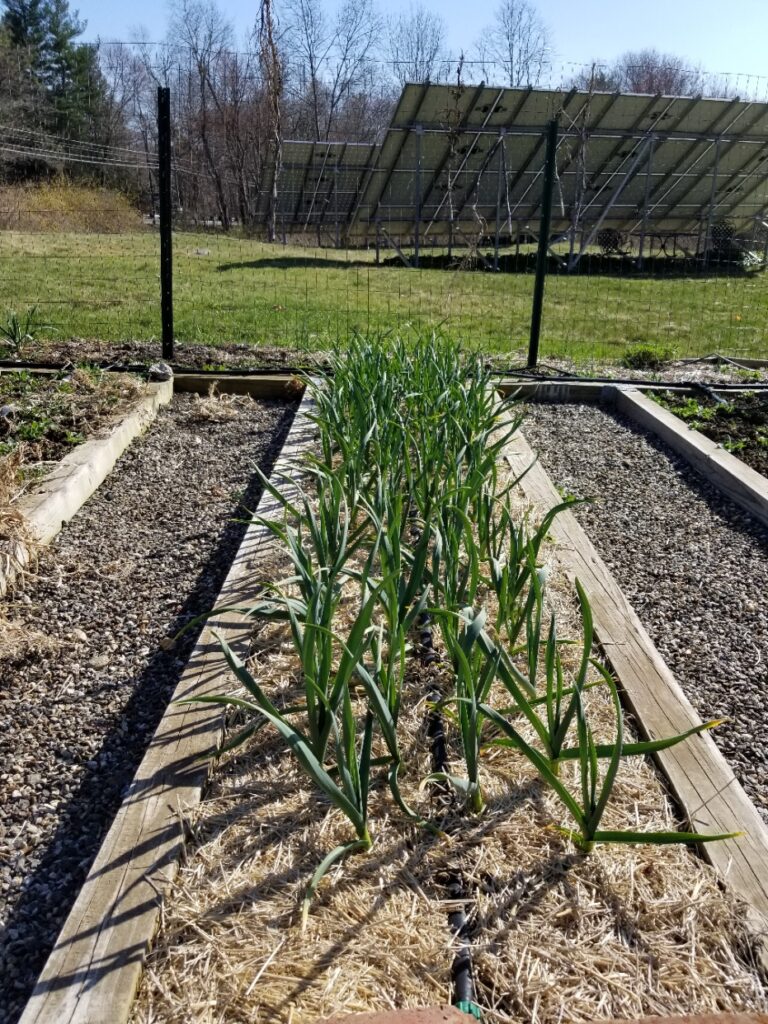
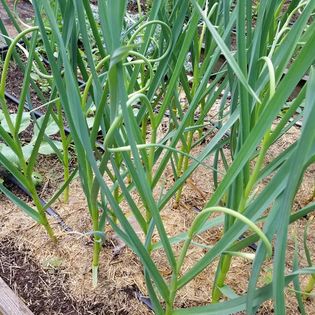

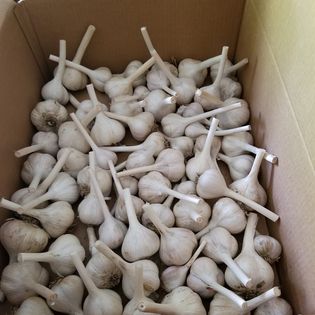
Garlic is one of my favorite crops. I tried unsuccessfully to grow garlic for a few years, until one day when I popped into Carl Pfaltzgraff’s roadside flower and veg market. He had a large patch of garlic that I didn’t recognize for what it was. “What IS that?” “That patch? Well, it’s garlic!” “Why doesn’t mine grow like that?” “Do you cover it with straw?” Carl’s bed was neatly made and tucked in, and the garlic was just beginning to wake up and poke through – it was hardneck garlic that he had planted the previous October, as he explained to me. He told me to plant the largest, most robust cloves that I could find, but that the most important thing is to cover it with straw for the winter.
So later that summer I set off to the Mansfield Farmer’s Market. I love the people from Tobacco Road Farm and they always have the most beautiful garlic. Actually everything they grow is beautiful, and they’re beautiful people too! I explained to the farmer that I was going to try my hand at growing garlic, sharing what I learned from Carl. She said, “But that’s not all there is to growing garlic! Did you feed it?” I looked at her blankly. “You have to feed it – eggshells!” She explained that she and her husband had each been growing garlic since long before they met, and that they both have always saved their eggshells for month before planting, pulverized them in a spice grinder, then scratching the powdered eggshells (calcium) into the soil where they intended to plant their garlic. I had been sending my garlic to bed without dinner! She very excitedly started picking through their garlic for the largest, smoothest heads, to get me off to a great start. She also cautioned me not to break through the paper when separating the cloves, and handed me a bag of goodness. I laughed and told her not to worry, that I’d still be back to buy garlic from them, and she flashed a big, big smile and said, “No you won’t!”
And she was right. I pulverized my eggshells and I tucked my garlic in for the winter, with a kiss on the forehead. The next summer I harvested the most amazing crop of garlic. I do this every year now. When I harvest, I reserve the biggest heads for planting in the fall, and I dry and stash the rest in our attic stairwell, they driest place in our house. I usually don’t run out of garlic until late winter.
When growing garlic, it’s also important to harvest the flower stalks at the proper time. The flower stalks are called scapes, and when the garlic scapes have fully curled, it’s time to nip them off. This encourages the plant to focus its energy on growing a bigger, more robust head of garlic, rather using it’s energy to produce the flower and seeds. We make garlic scape pesto each year and freeze it. Our stash of garlic scape pesto typically lasts into the spring, bringing the kiss of summer to winter dishes. It’s a real delicacy.
KALE
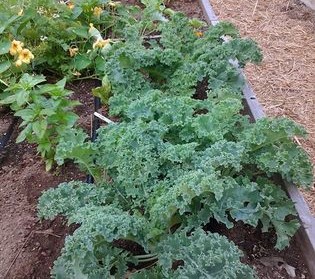
WINTERBOR
This is our second season growing Winterbor. It’s a type of curly kale that never gets bitter. And once it starts producing leaves, it doesn’t stop, forming tree-like stalks. We harvest the oldest leaves from the bottom as quickly as they’re pushing out new leaves at the top. I do have to blast them with water to keep the cabbage moths at bay, but so far, it’s been incredible. Sauteed kale, kale chips, kale in stews, kale Caesar salad. Kale, kale, kale, kale, kale, kale.
RECIPE LINK:
LEEKS
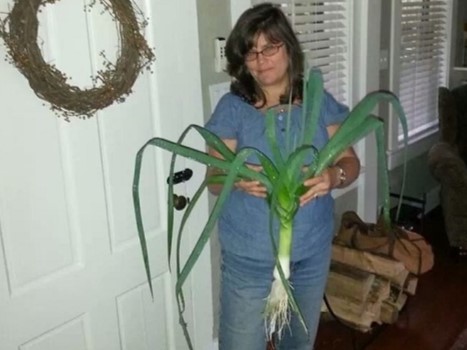
LEEKS
There are a few problems with growing leeks. First, you must start the seeds early because they’re a 150-day crop. Not the end of the world – it becomes part of the rhythm of your life. However, once you prize them apart and tuck each little seedling into a deep hole, they tend to get lost and shaded out in my garden. I just don’t learn. The most troubling problem is that until they begin to grow and present themselves, I sometimes mistake them for weeds and yank them out. Doh! I can’t imagine gardening without them though – they make all those fall soups and stews so much more complex and lovely.
LETTUCE
MESCLUN
ROMAINE
MUSHROOMS

SHIITAKE MUSHROOMS
November 5, 2022 – Ron, Bob, Mike, and I inoculated white oak logs with shiitake plugs (close to 800!) and sealed them with wax. We’ve tried this before with limited success, but we’re serious this time. We should expect shiitakes within eight months – soon!
MUSTARD GREENS
With so many other greens coming out of the garden, the mustard greens tend to get overlooked. But they’re a wonderful addition to soups and any dish that calls for a mélange of greens. Mustard greens are mellow and hearty.
RECIPE LINK:
PEPPERS
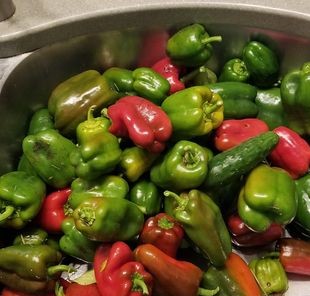
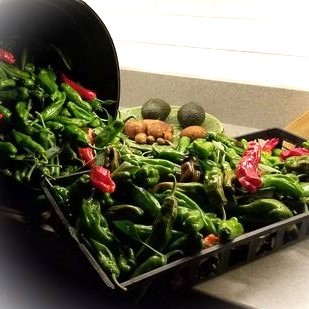
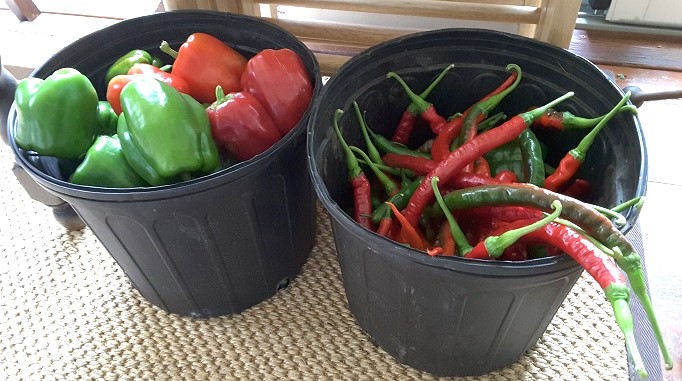
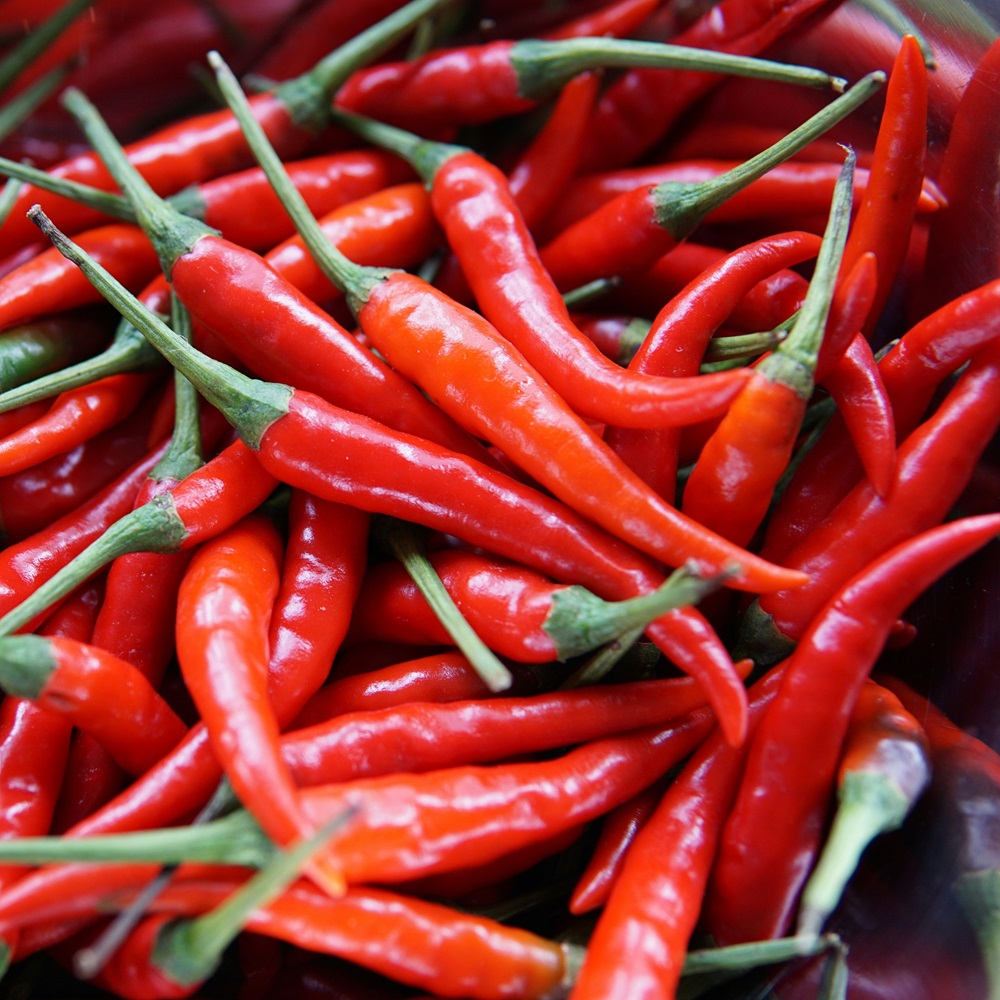
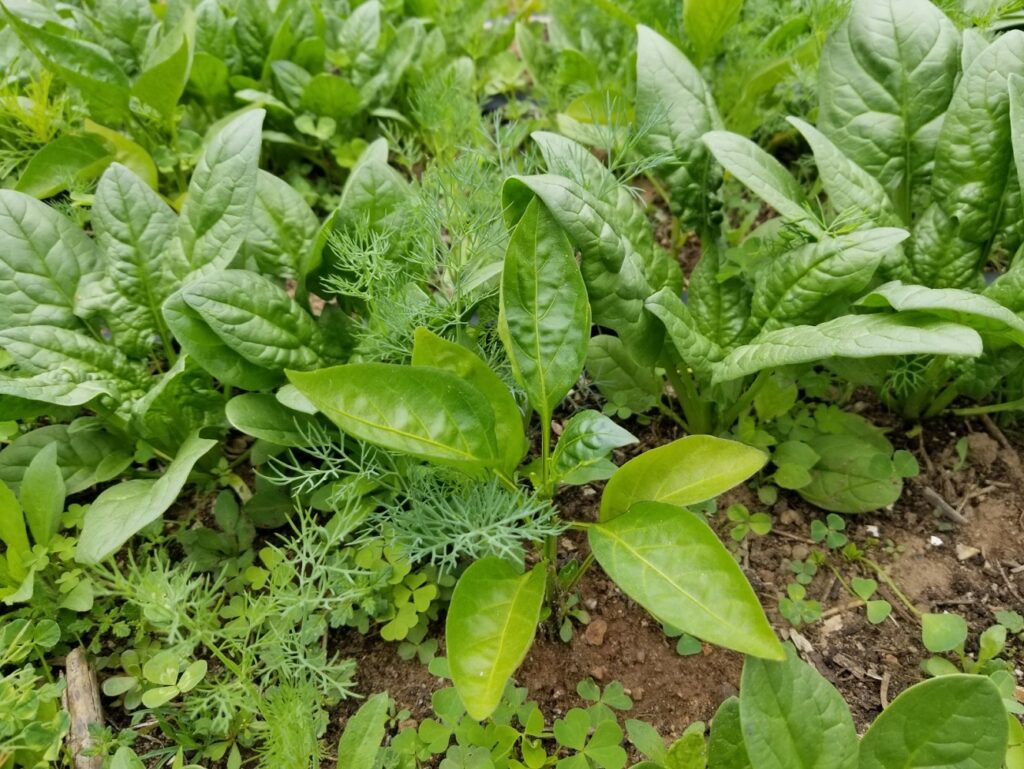
BELL PEPPERS
I love bell peppers. Some years they produce better than others. I don’t worry about having too many, because they freeze so well. No need to even blanch them. This year I planted spinach and intercropped twenty-five pepper plants with the spinach. The spinach acts as a living mulch for the first part of the summer. I don’t think the peppers and the spinach mind living in such close company. There’s plenty of dill that self-seeded and radishes intercropped as well. Quite a party.
RECIPE LINK:
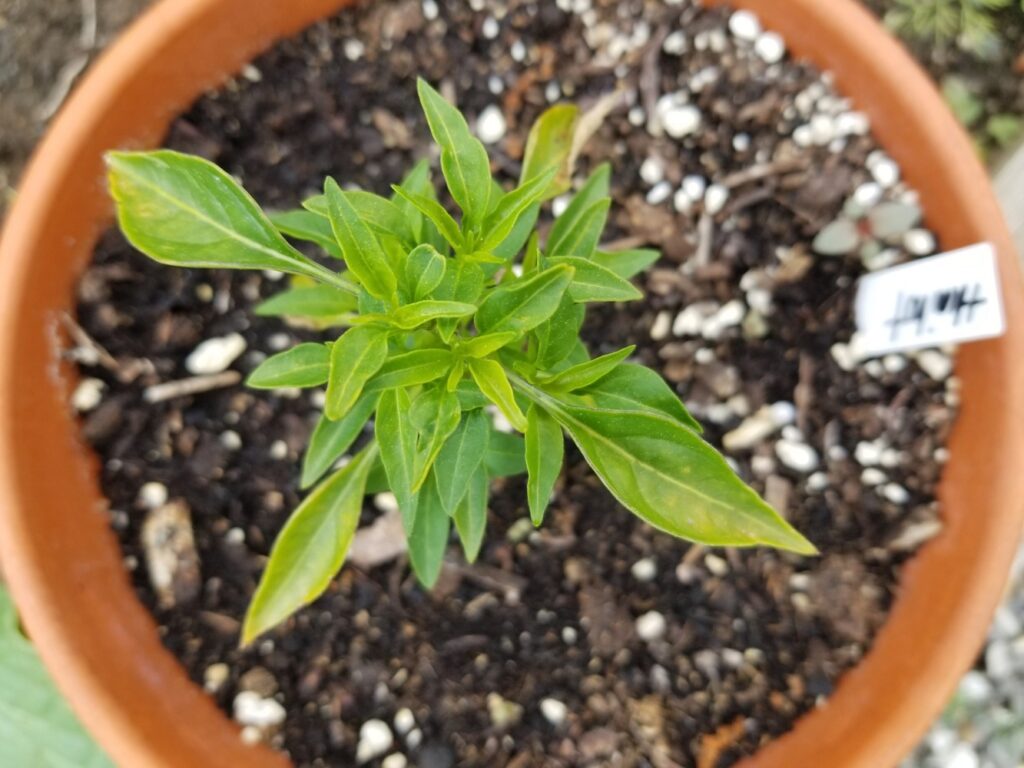
THAI HOT
These are mighty little plants, with much more fire-power than you’d expect. The peppers are smaller than my pinkie nail, but they pack a punch. We dry them and crumble them into dishes where capsaicin is appreciated.
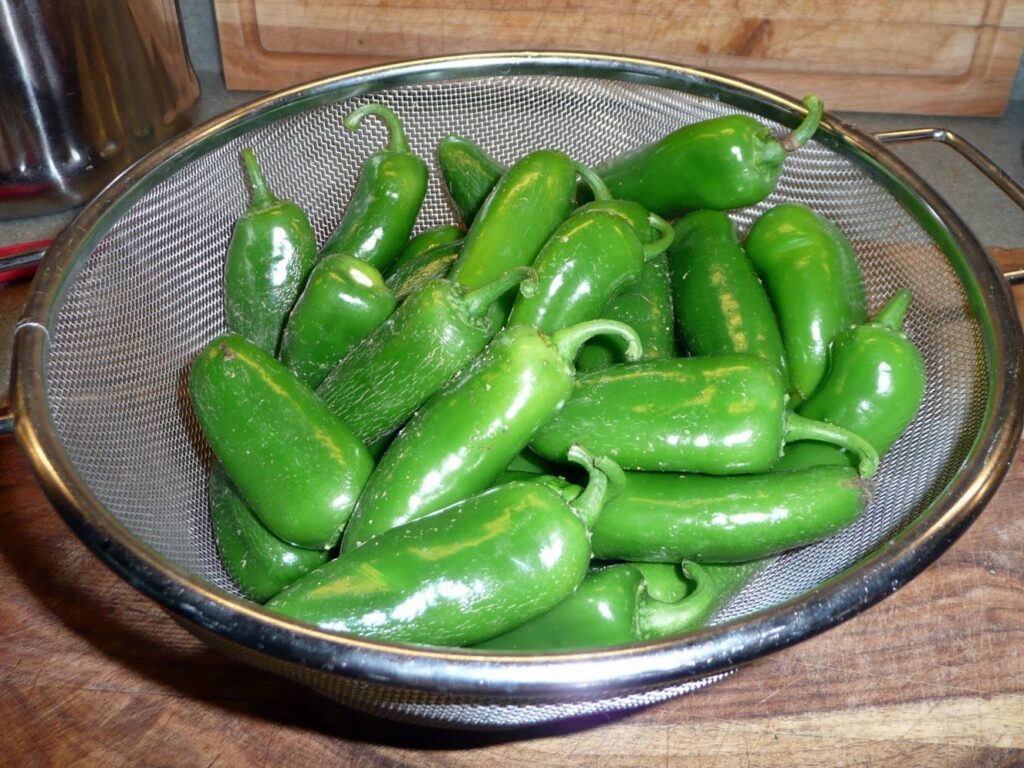
JALAPENO
Jalapeños are the most versatile pepper, delicious fresh, but almost as good when frozen. I stash them in the freezer without any prep. You just fill up a Ziplock bag, and pull them out as needed all winter long. It takes about five minutes for them to thaw enough so that you can run your knife through them. Nachos, jalapeño escabeche, salsa, and guac…
POTATOES
The first time we experienced growing potatoes, it was at the Down to Earth CSA in Stafford, CT. We had a working membership, and luckily we were assigned to work on potato harvest day. The potatoes were grown in long rows and there were only four of us, so it was a lot of work, but oh, so fun! I felt like I was fifty years old going on ten – so amazed and delighted, digging for buried treasure. It’s still that much fun all these years later.
After the CSA, we began growing our own. We started with fingerling potatoes – La Ratte from John Scheepers Kitchen Garden Seeds in Bantam, CT. They were absolutely delicious roasted in a clay pot – so creamy and flavorful. However, they weren’t terribly prolific, and they weren’t inexpensive. So last year we purchased a selection of potatoes – red, purple, and golden waxy potatoes and a few Russets from random sources – Ocean State Job Lot and probably Mackey’s. Ron had built a new bed for the potatoes, and we didn’t bother to segregate the different types of potatoes. It was truly a surprise when we dug them out of the ground! The Russets were luscious, and the other potatoes were delicious roasted and smashed.
We’re only growing Russets this year because I find them to be so versatile. We just installed a hybrid heat pump hot water heater, so our basement is now cool and dry, so we’re hoping we’ll be able store them more effectively than last year. We chitted our Russet seed potatoes yesterday (early May) and will be getting them in the ground within a few days. We should have started earlier, but you know – life intervenes.
RADISHES
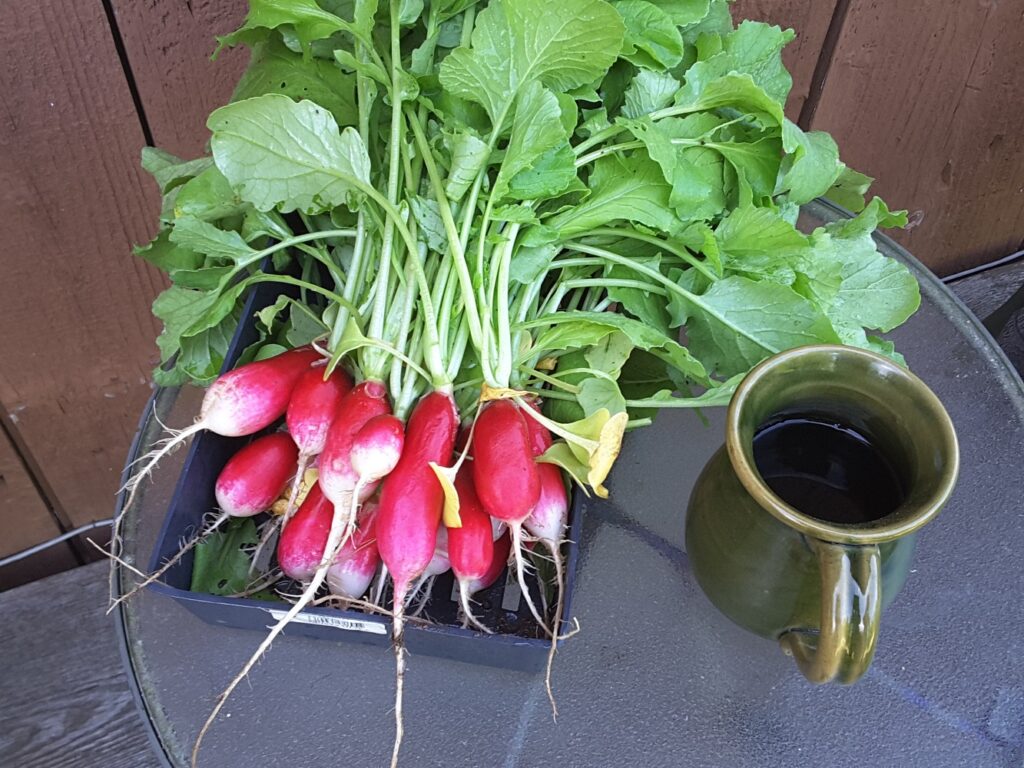
FRENCH BREAKFAST RADISHES
These radishes are incredibly mild. It seems a waste to bury them in a salad. We like to eat them as snacks, dredged through a dollop of anchovy butter.
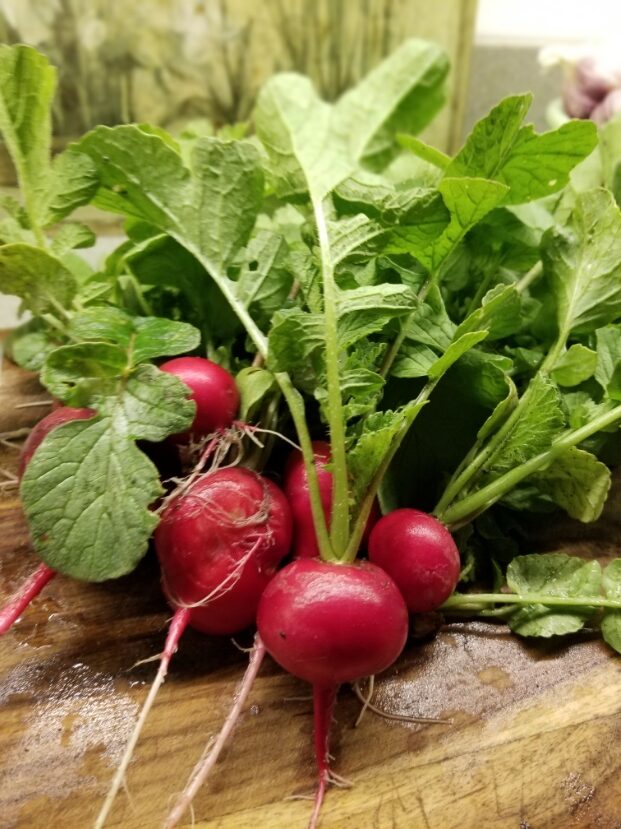
CHERRY BELLE
Cherry Belle radishes are the belle of the ball – so plump, so mild, so pleasing and easy.
SPINACH
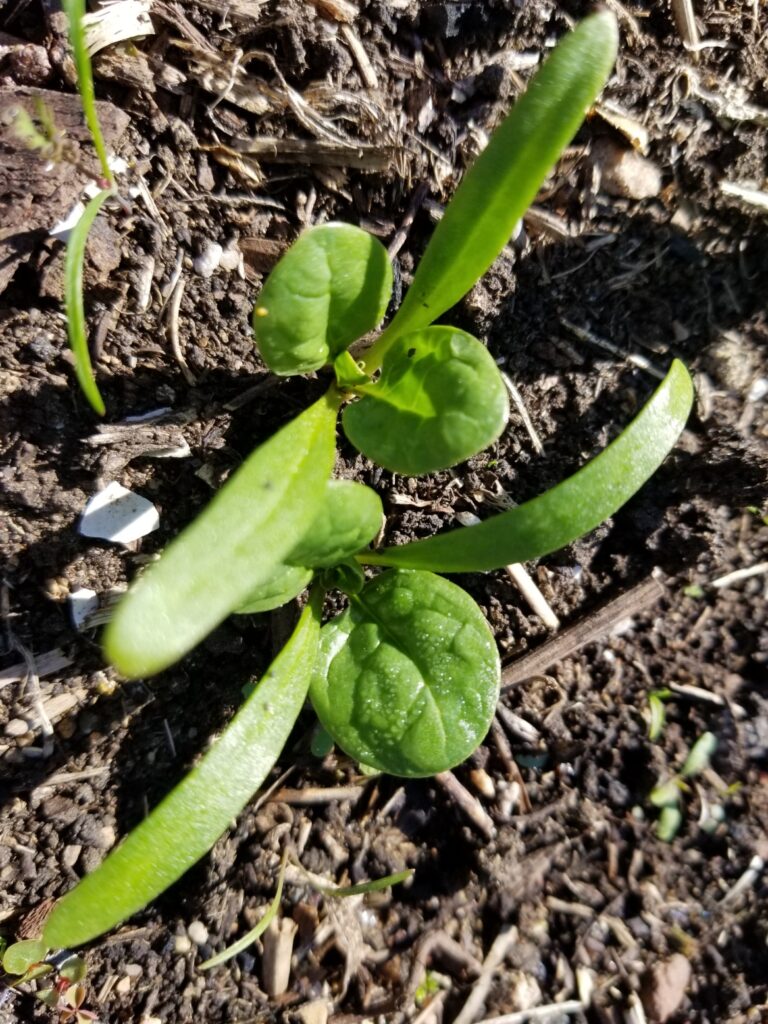
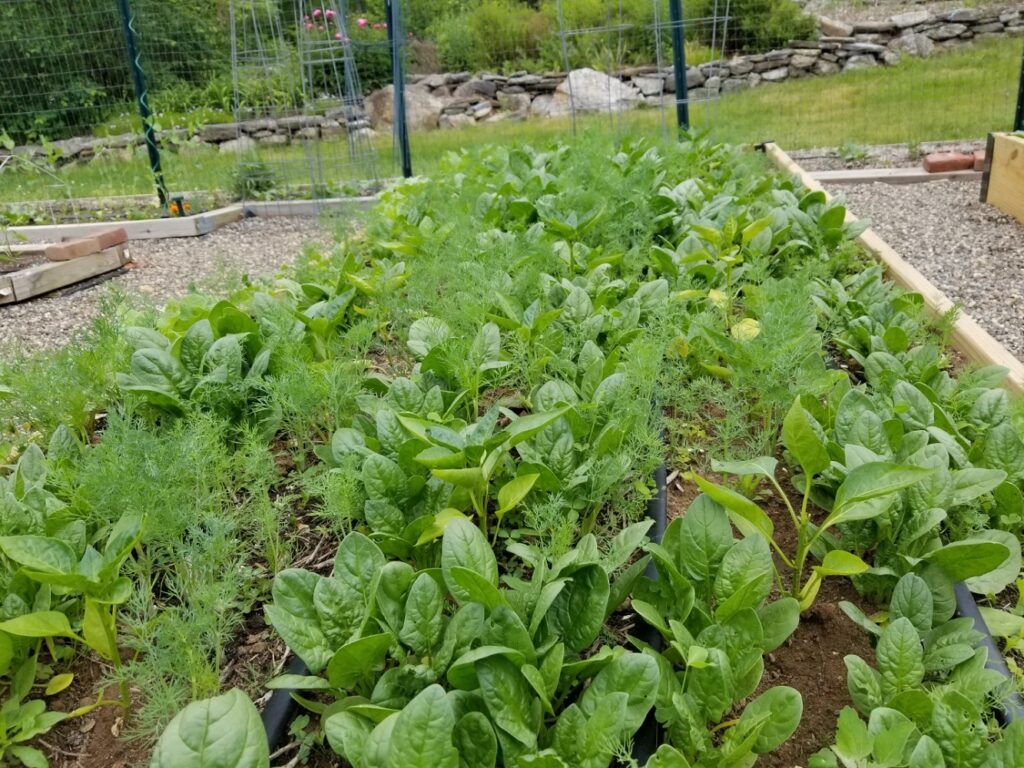
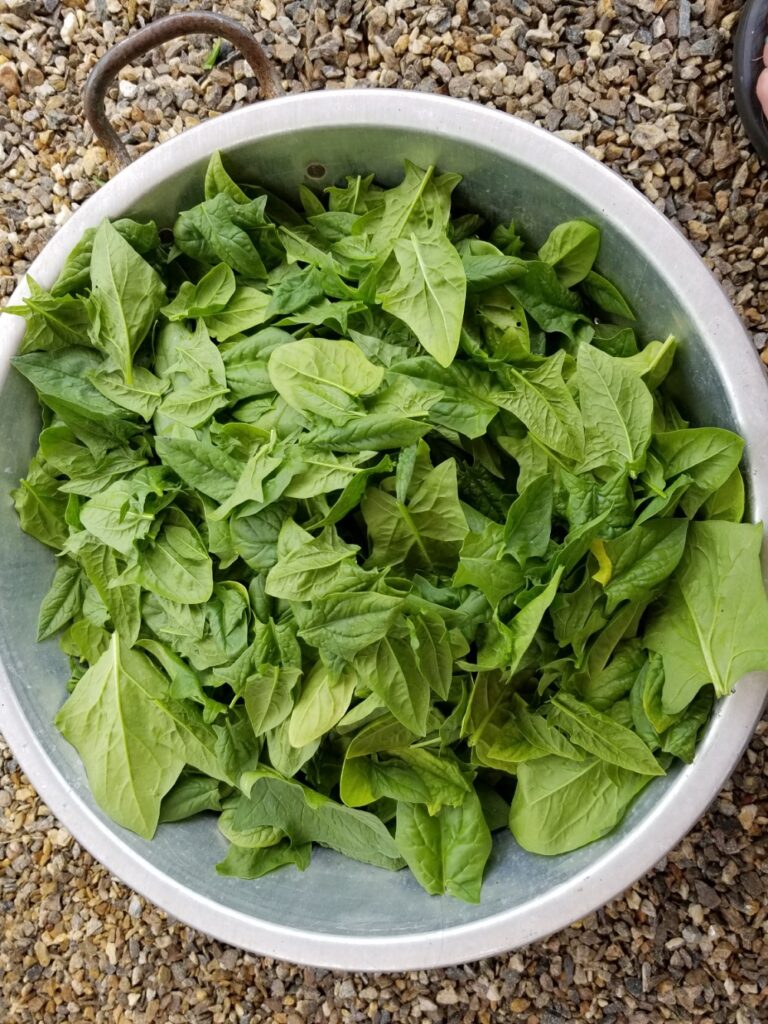
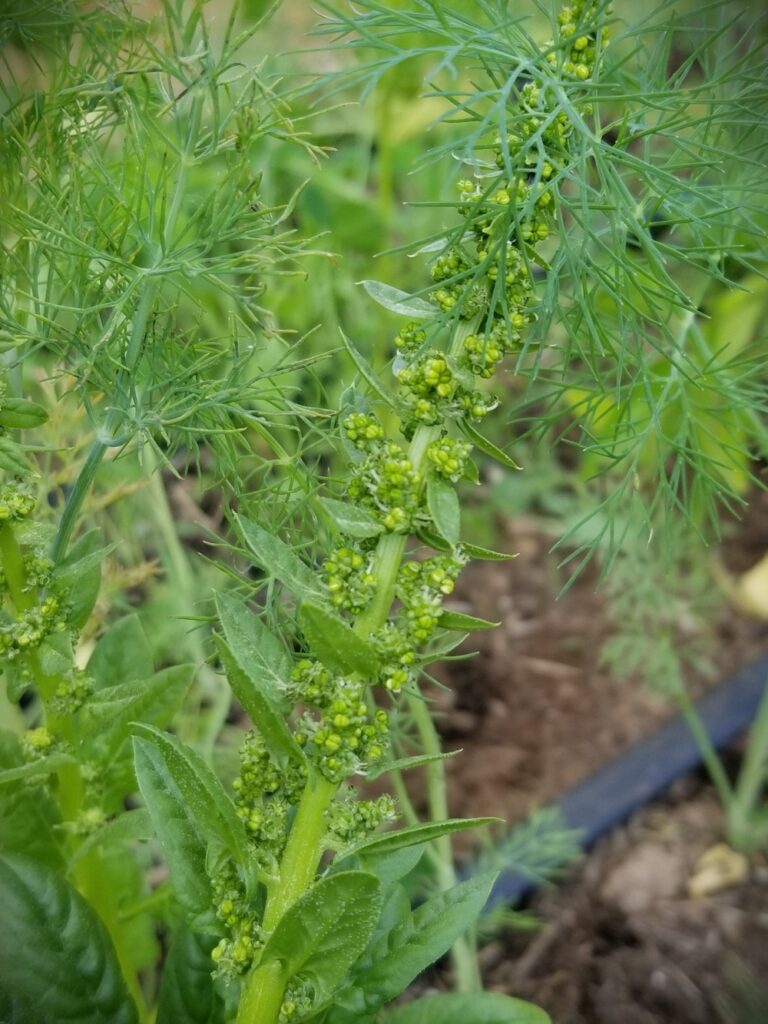
SUGAR SNAP PEAS

23apr23
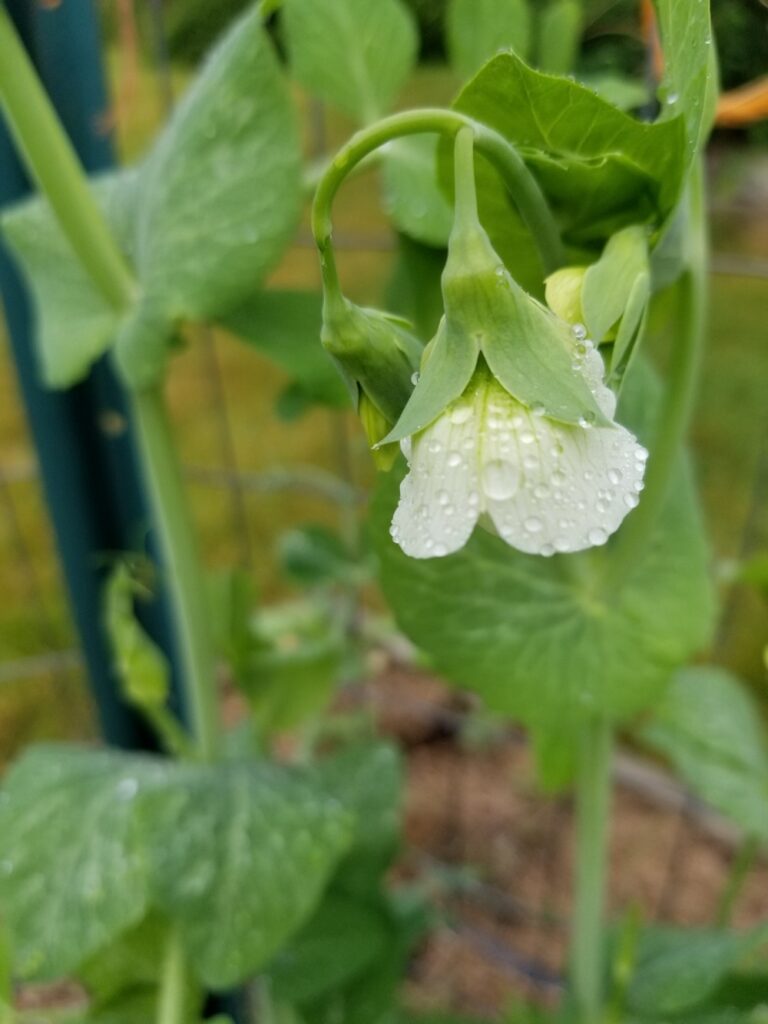
15jun23
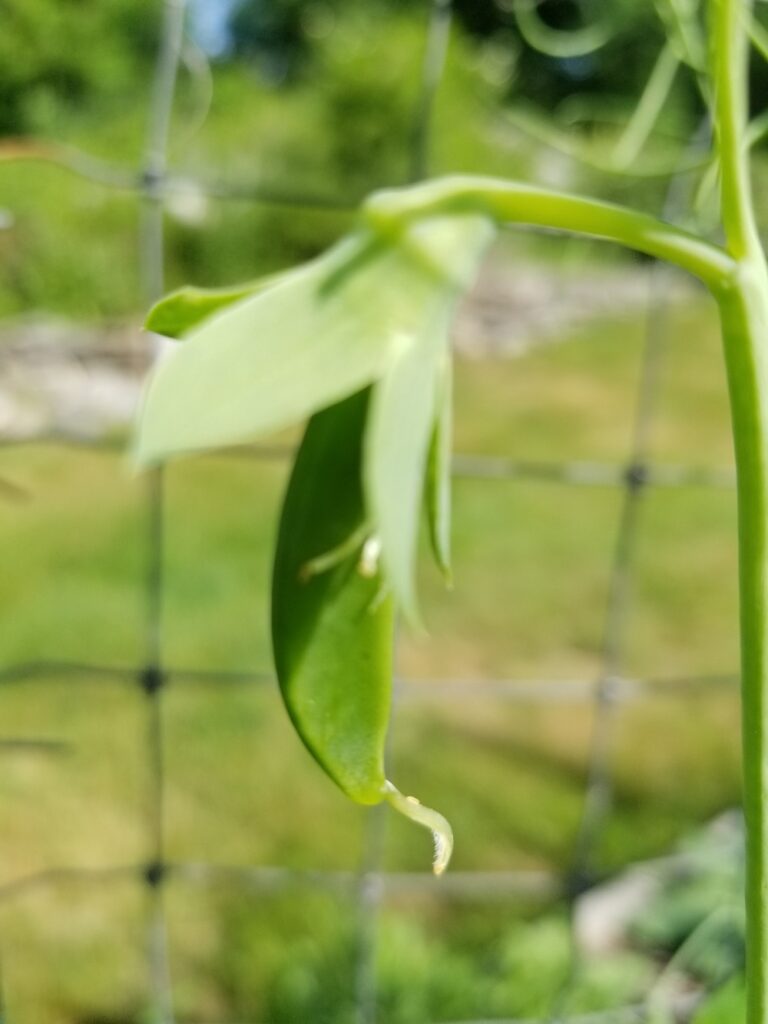
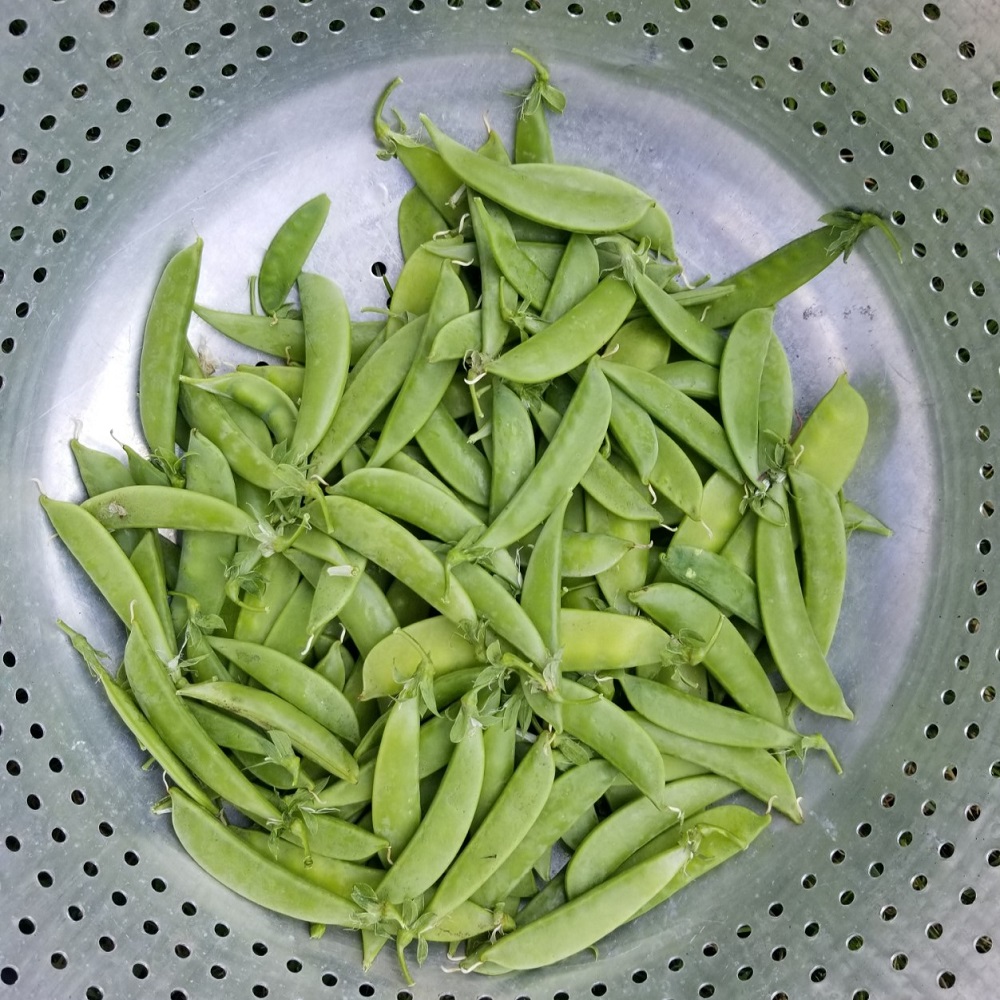
My nephew Jayce help me plant sugar snap peas the Sunday following Easter, and the first pea blossoms appeared mid-June. Then the first pea pods emerged within days! I was careful this year not to plant the whole pack of seeds because in prior years the peas took up way too much garden real estate. And the larger problem was that we had so many peas that I was begging people to come pick! Sugar snap peas are absolutely wonderful in stir-fry and salads (even potato salad), but the only way I’ve found to preserve them is to make pickled sugar snap peas with fresh tarragon.
RECIPE LINK:
SUMMER SQUASH
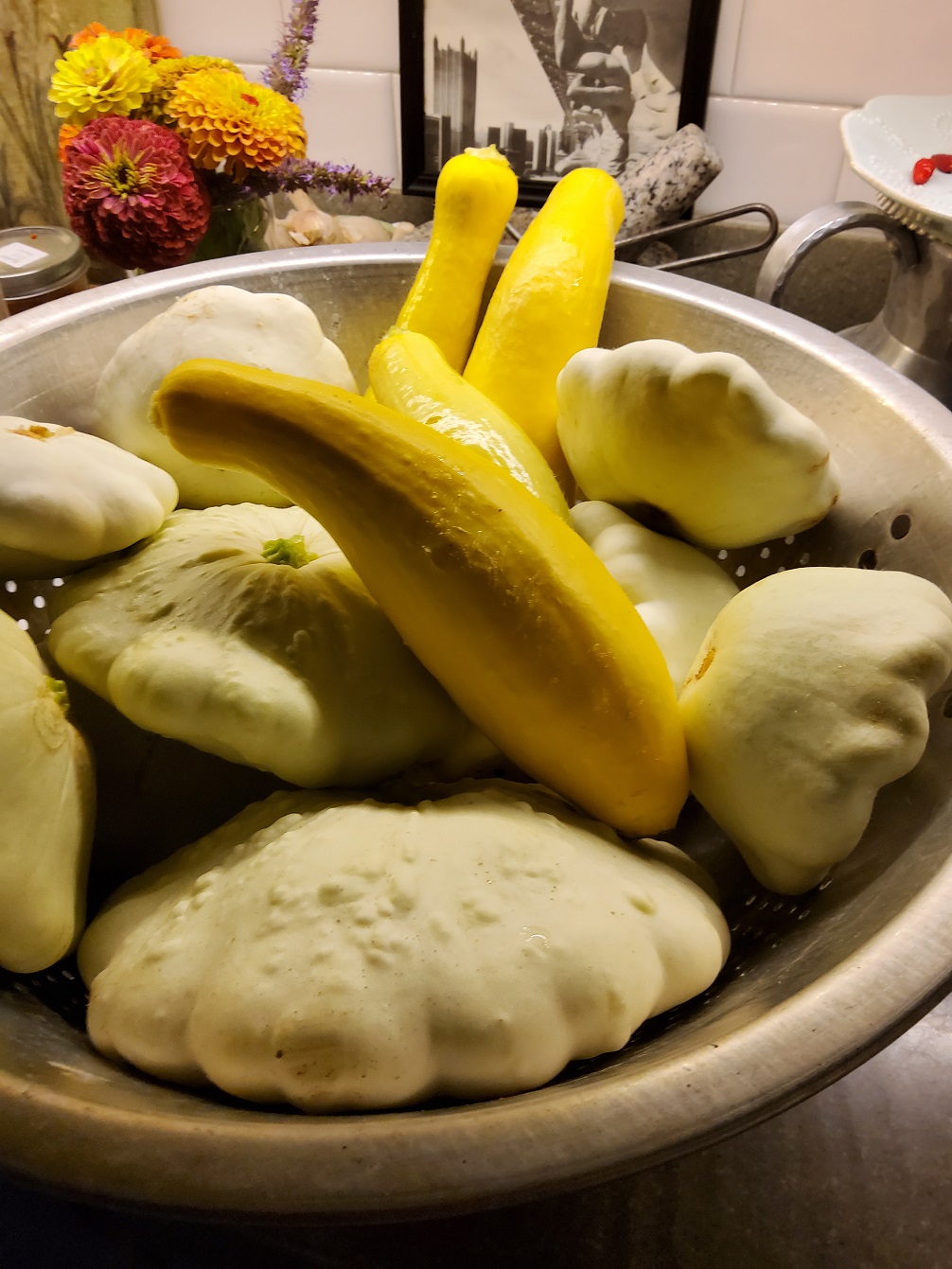
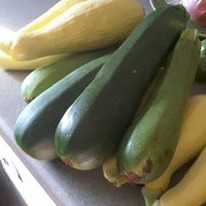
PATTYPAN SQUASH
September 11 – the pattypans are just starting to come on. My favorite way to prepare them is on the grill, and then bath them in an herb sauce.
YELLOW SQUASH
The yellow squash is always so dependable. I never get overwhelmed with the volume because they freeze so well – no need to blanch. Just dice and vacuum seal. I love having them available to throw into stews and curries all winter long.
ZUCCHINI
What can I say? Everybody loves zucchini. We’ve had problems with squash vine borers in the past, but I now wrap the stems with aluminum foil and grow the plants vertically through a tomato cage, cutting off all of the leaves below the first flower back to the stem.
RECIPE LINK:
SWISS CHARD
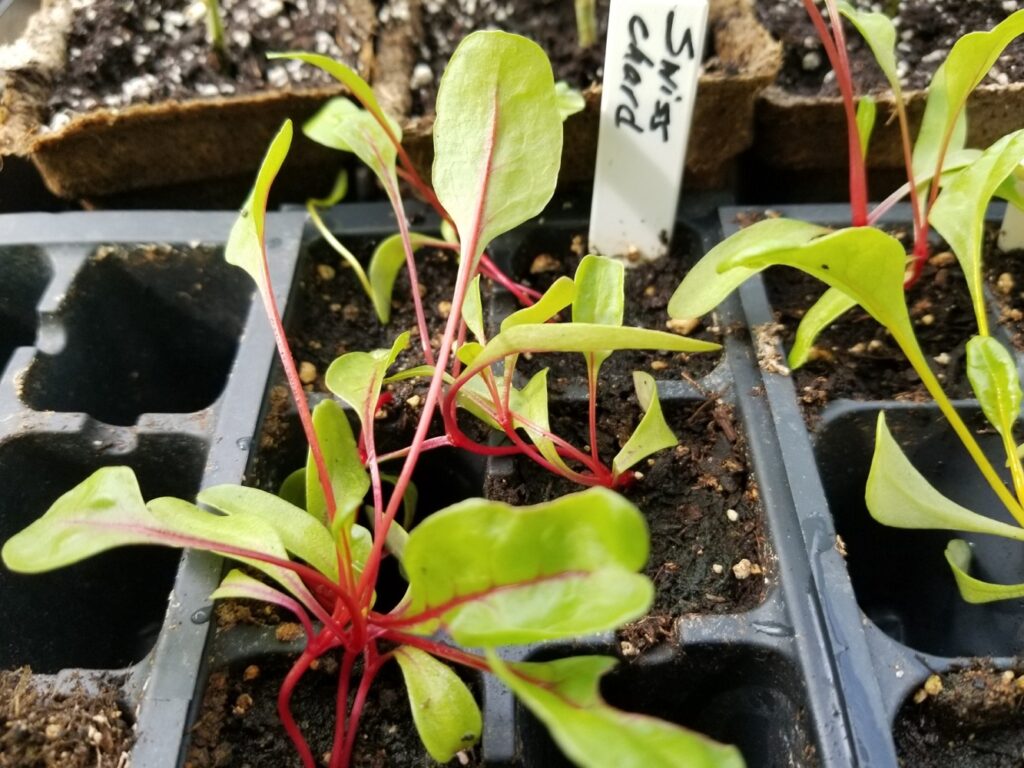
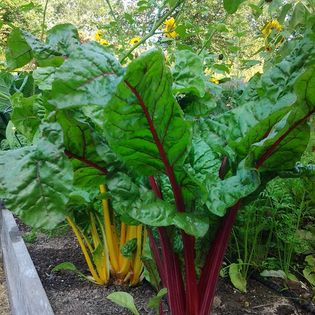
Swiss chard is so easy. It germinates quickly and stands tall in the garden all summer and into the autumn months. Unless the goldfinches get it, that is. Goldfinches love Swiss chard! I recommend intercropping it with marigolds so that the goldfinches don’t discover it, because once they do, it’s all over.
RECIPE LINK:
TOMATILLOS
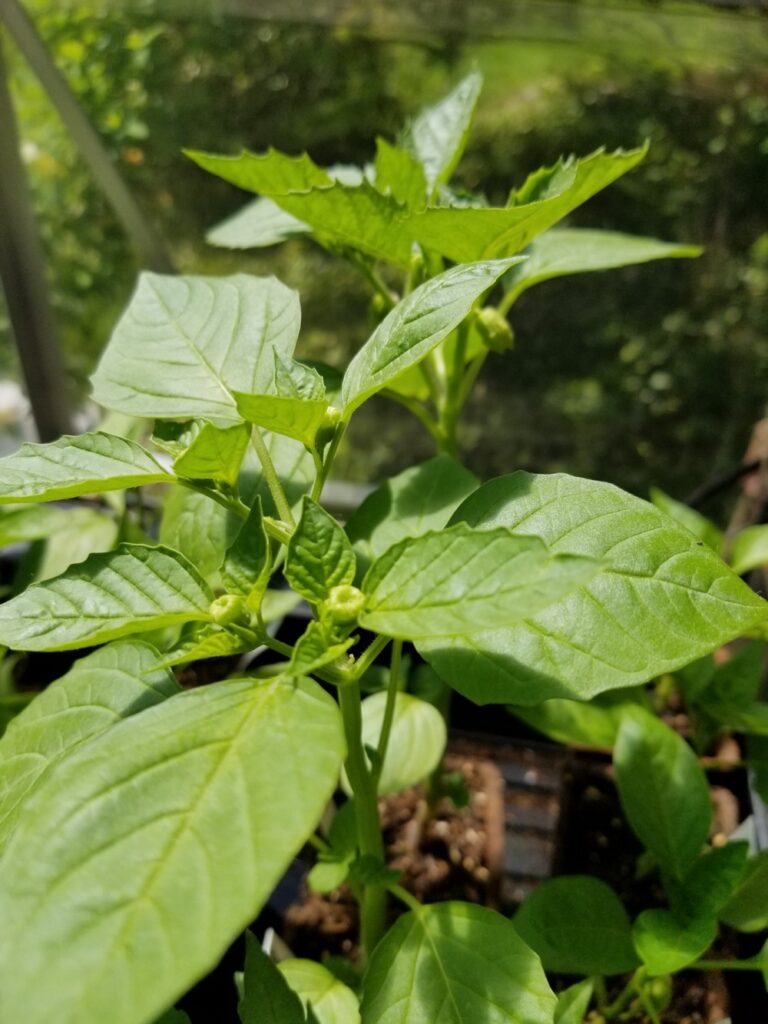
TOM VERDE
If you have the room, there’s no reason not to grow tomatillos, because they expect nothing from you, and give back such abundance. They reseed readily, so once you have them you’ll probably be able to just transplant volunteer seedlings to a sunny spot that’s out of the way. Just don’t forget to visit them in late August or September for the bounty that they offer.
RECIPE LINK:
TOMATOES
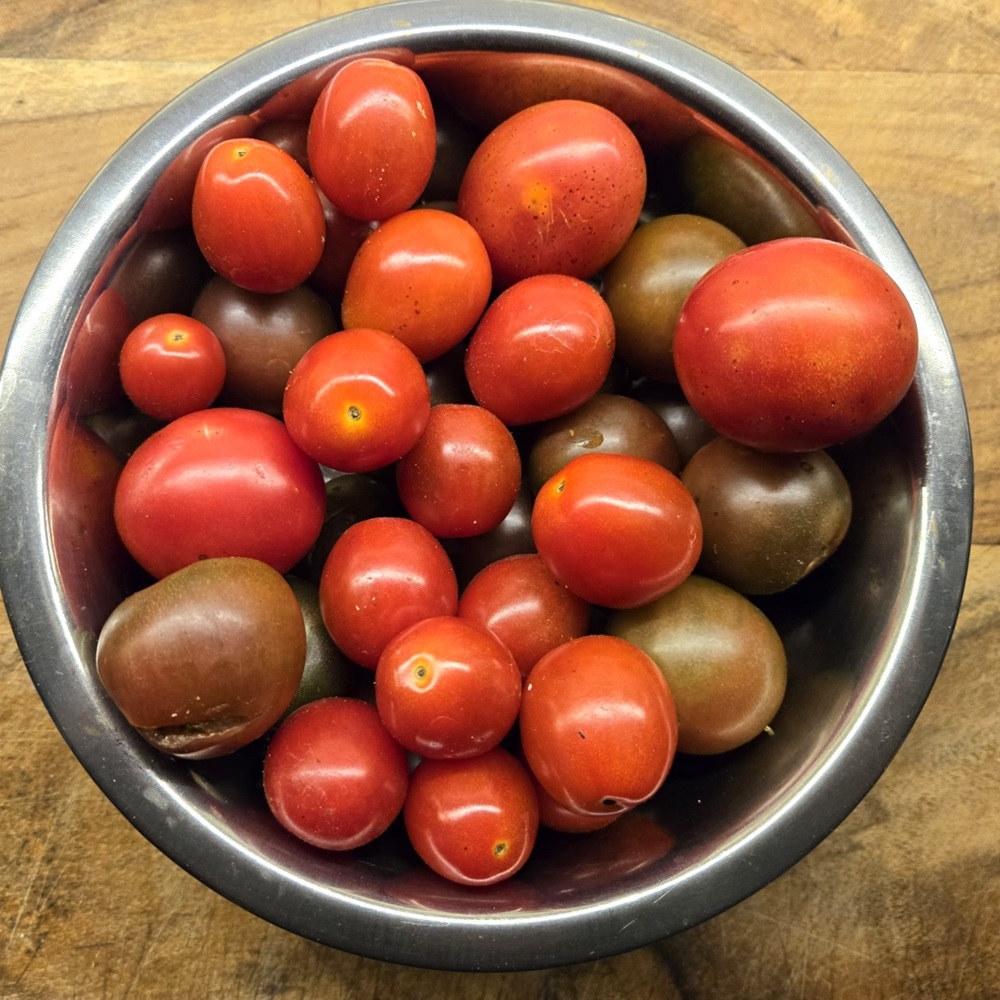
CHERRY TOMATOES
We grow chocolate cherry tomatoes and Sweet 100.
RECIPE LINK:
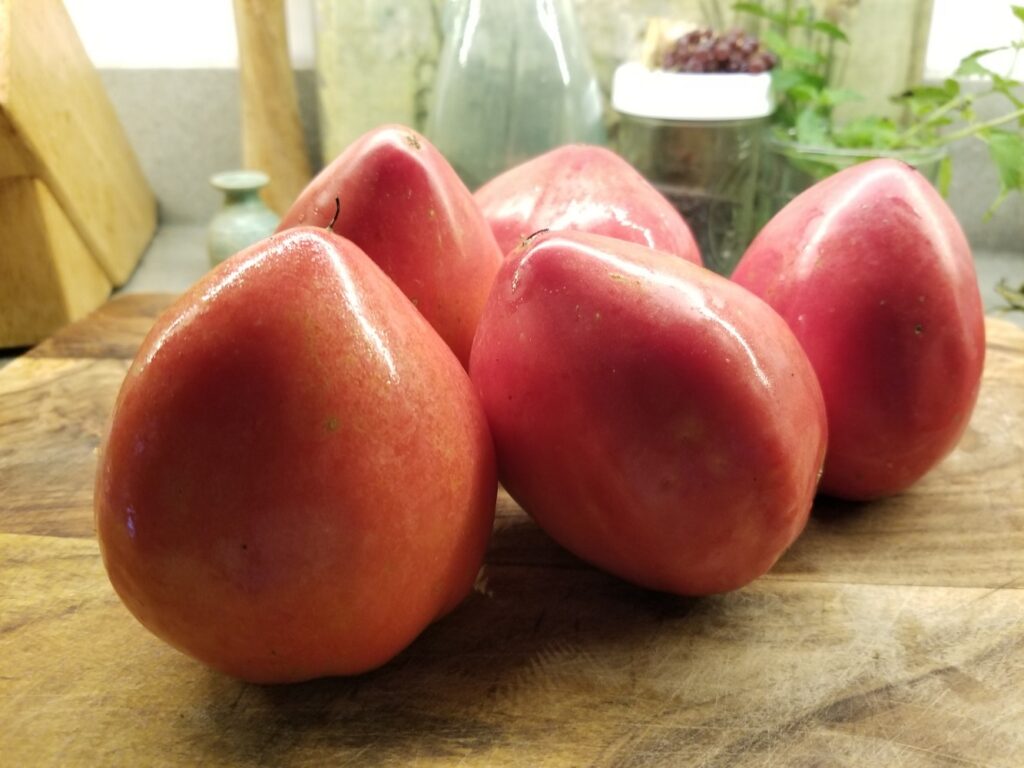

AL’S
We’ve been growing Al’s Tomatoes since 2005 or so. When we moved here in 2002, this old farmhouse was in bad shape. We were lucky enough to find a contractor who partnered with us for a few years to help begin the transformation to the home it is today, so needless to say, we spent a lot of time with him. His name was Al. He was excited when we started growing a few vegetables intermixed in our flower beds, and showed up one day with tomato seeds – a variety that his family had been growing for generations. I think it’s a variety of Hungarian Oxheart, but we just call them Al’s. I save and share seeds every year. They’re meaty, sweet, and juicy. They’re perfect.
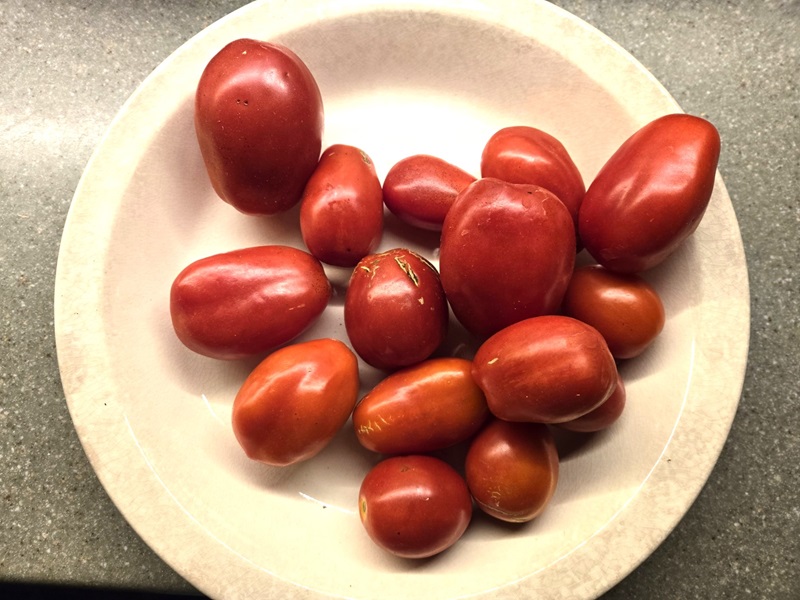
ROMA TOMATOES
Roma tomatoes were derived from San Marzano tomatoes, and they have similar characteristics – they’re both meaty with high sugar and acid content, the sweet spot for sauces.
RECIPE LINKS:
BLACK KRIM
GOLD MEDAL
SAN MARZANO
WEEDS
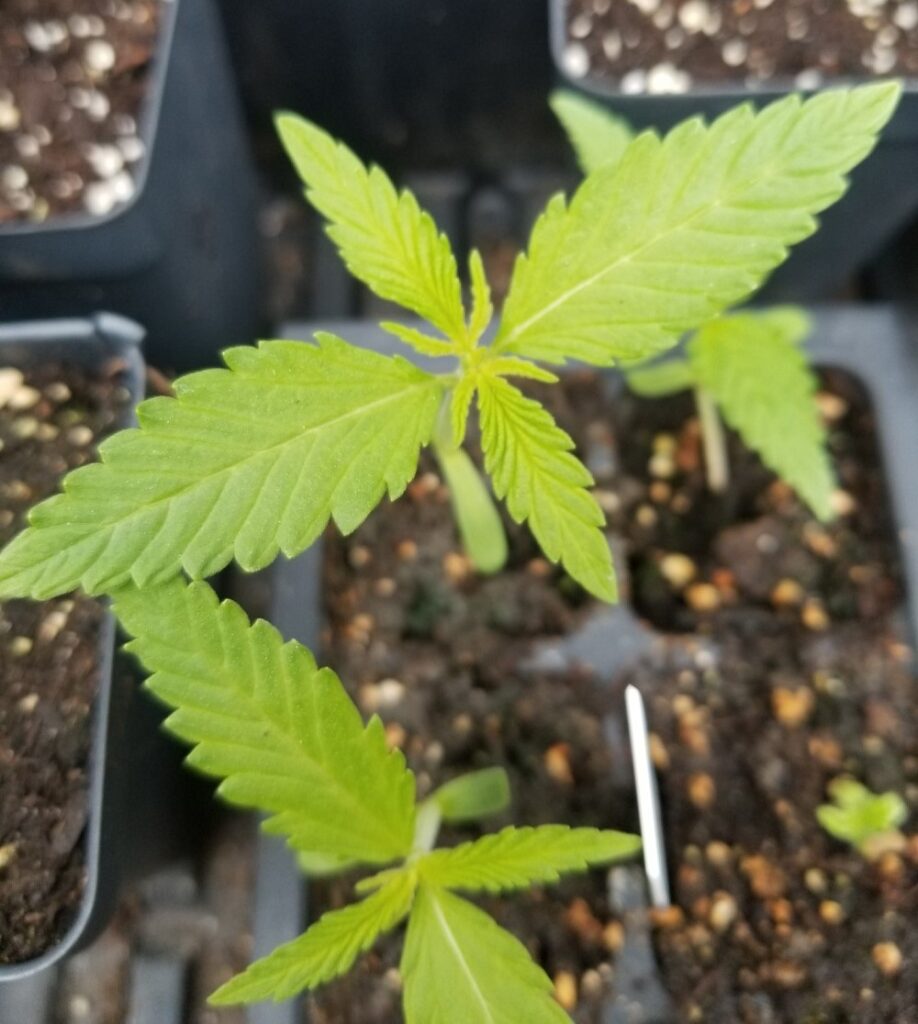
For great garden lore I highly recommend Michael Pollan’s book Second Nature, especially the essay titled “Weeds are Us.”
WINTER SQUASH

BUTTERNUT SQUASH
RECIPE LINKS:
If you’d like to be notified when new posts are added to this site, please subscribe below, and be sure to click through on the email you receive to confirm your subscription. If you don’t receive a confirmation email, please check your spam folder.
